The Best Three Kings Parades
Saturday, January 6, 2024
Lights, floats, pages, sweets, and a lot of excitement are all you need to make a procession of the Magi or Three Kings into a one-of-a-kind experience. Even so, every year towns and cities go the extra mile to make these parades special: theatrical productions with top-quality settings and costumes, and fabulous fireworks. From all the processions organised in Spain every 5 January, we have chosen five which amaze children and adults alike, due to their spectacular production values, their originality, or their history.
1. Alcoy, the oldest in Spain
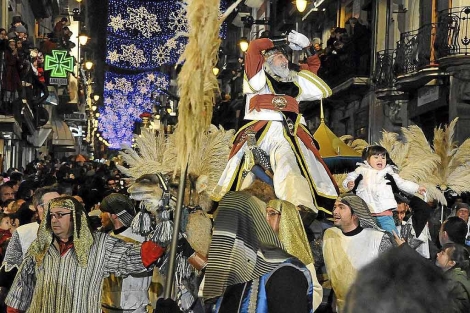
Any discussion of Magi processions in Spain has to begin with Alcoi, which has been holding its parade since 1885. This is not its only impressive statistic - it also has an enormous number of participants, with nearly a thousand people in the procession. One of the most exciting parts of the parade is the torch-bearers, who light the way for the floats and the royal pages. As always in the Valencia region, bands of musicians are an essential part of the procession, with Christmas carols to add to the mood. Up to three bands participate in the parade, as well as groups of drummers and dulzainas (pipers). Another feature of this parade is the work of les negres, the royal pages who bring presents to the children, using wooden ladders to climb up to the balconies of the houses. Traditionally, the event begins at 6 pm and ends after 10 pm, with the sky lit up by an impressive fireworks display.
2. Girona, all lit up
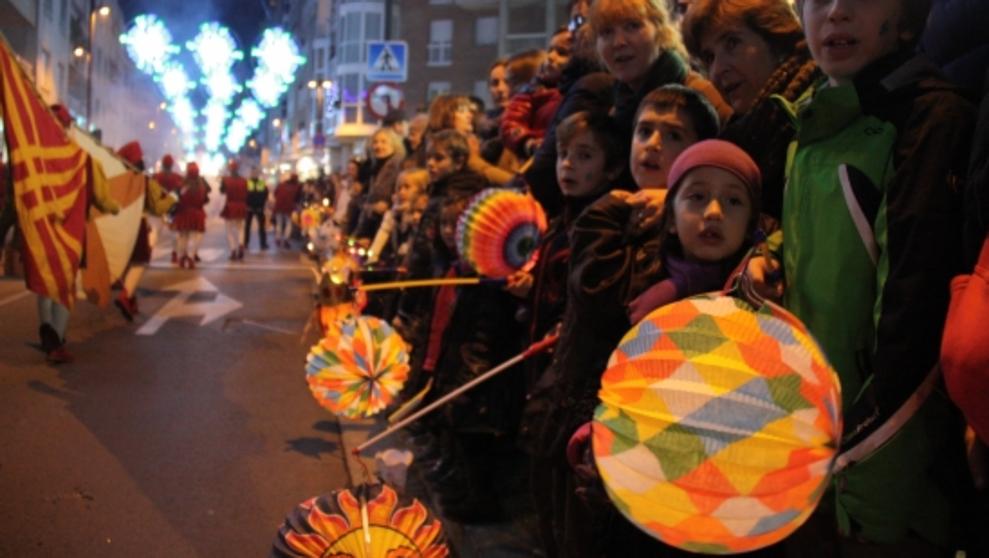
Processions of the Three Kings in Girona province are lit in a very special way, with the fanalets all the children carry. These are small lanterns, made of paper and brightly painted, with a lightbulb inside and carried on a stick. In recent years they have been modernised and can be bought in the shape of one of the Magi, a Christmas tree, a snowman, or even the latest popular cartoon character. The tradition is thought to have begun in mountain villages where the children would light bunches of lavender to make sure the Three Kings would see them, even though there was no procession in the village. Now there are many towns and villages where children light the parade with their little lanterns, in one of Catalonia's most endearing Christmas scenes. Although the tradition has spread throughout the region, the processions in Girona province, such as in the cities of Girona or Vic, are still among the most spectacular.
3. Cerler, the Magi on skis
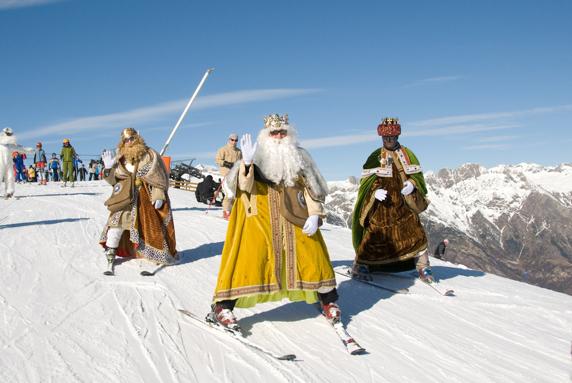
Few presentations are as spectacular as the arrival of the Three Kings at the Cerler ski resort, in the Huesca Pyrenees. Their Majesties sweep down the slopes, leaving the children open-mouthed in amazement, as well as their parents - it is pretty unusual to see the Three Kings riding a chairlift or performing pirouettes on skis. For the whole morning, they chat with the children and pose for photos with them, and even hand out sweets, without the need for royal pages. The celebration continues in the afternoon in Benasque, with a more traditional and restrained procession - this is a small village - but with the best possible setting. There's no need to use fake snow to decorate the parade here, as the real thing is usually in plentiful supply for Epiphany, and the scene could hardly be more picturesque.
4. Madrid, the most spectacular
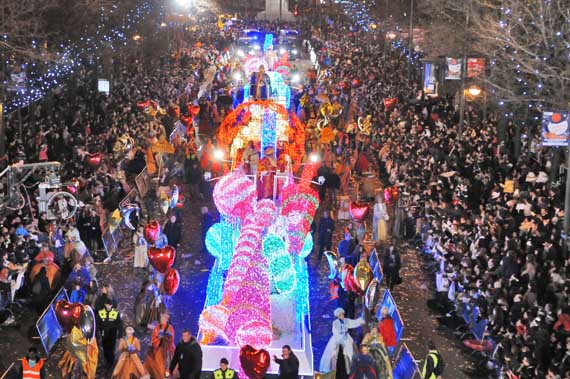
Although there are several processions in the capital every 5 January, the most spectacular pass through the city centre. This is one of the biggest in Spain, with more than 1,500 volunteers taking part. The route traditionally begins at Nuevos Ministerios and ends at Plaza de Cibeles, like so many of the city's major celebrations. It was first held in 1928, and one of its unusual features is that since the late 1980s, the Three Kings have been played by members of the City Council. Another peculiarity is that the people in this parade don't throw sweets into the crowd along the whole route, only in the fenced-off areas. The City Council introduced this measure in 2014 for the children's safety. The parade ends with a fireworks display after a speech by the Magi in Plaza de Cibeles.
5. Santillana del Mar, like a fairytale
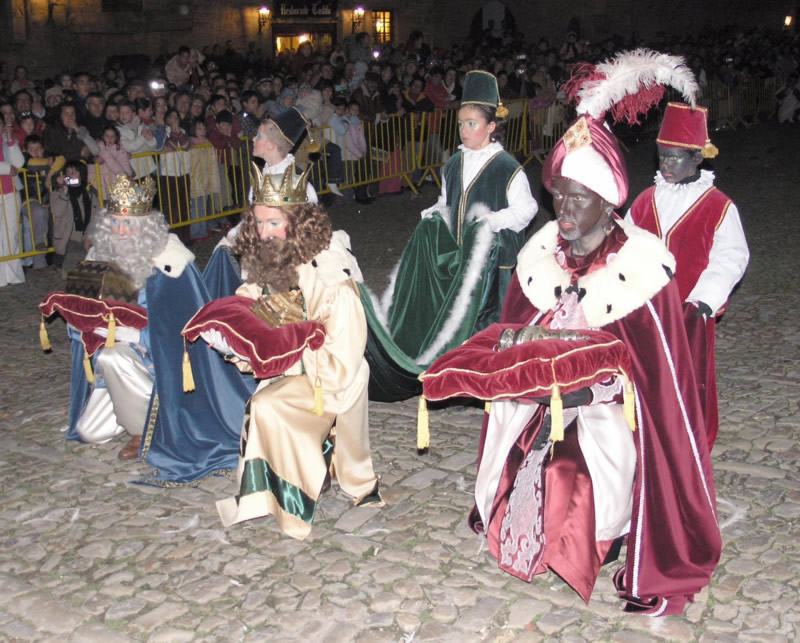
This is one of the prettiest medieval towns in all of Spain, so here the processions of the Magi have an incomparable setting, one of the main factors which have made it an official National Tourism Festival. The setup is different from most because as well as the traditional procession, eight scenes are performed from a Mystery Play, the Auto Sacramental de Los Reyes Magos. The streets are covered in straw, torches are lit as dusk falls, and the townspeople dress up as pages, washerwomen and shepherds. The scene-setting and the participation of many of the residents completely transform Santillana, giving the sensation of having travelled back in time more than two thousand years. The numbers give an idea of the majestic scale of the event: nearly 500 extras, 100 torch-bearers, 5 floats and around twenty horses to thrilling young and old alike with the magic of Christmas.
 0
Like
Published at 9:37 AM Comments (0)
0
Like
Published at 9:37 AM Comments (0)
Top Rural Destinations for 2024 in Spain
Saturday, December 9, 2023
Spain offers a plethora of charming towns in practically every province that continually draw the attention of tourists. Each town boasts unique features that set it apart. For those seeking inspiration for their next adventure, it is worth noting these seven popular rural destinations. These picturesque locations range from inland towns to mountain getaways, ensuring that there is something for every type of explorer. Grab a notebook and jot down these must-visit rural destinations in Spain for 2024:
1. Cazorla (Andalusia)

Located in the interior of the Sierra de Cazorla, this municipality is considered the most important in the region, due to remains and excavations of Iberian, Roman and Arab origin that have become historical heritage.
2. Jaca (Aragón)
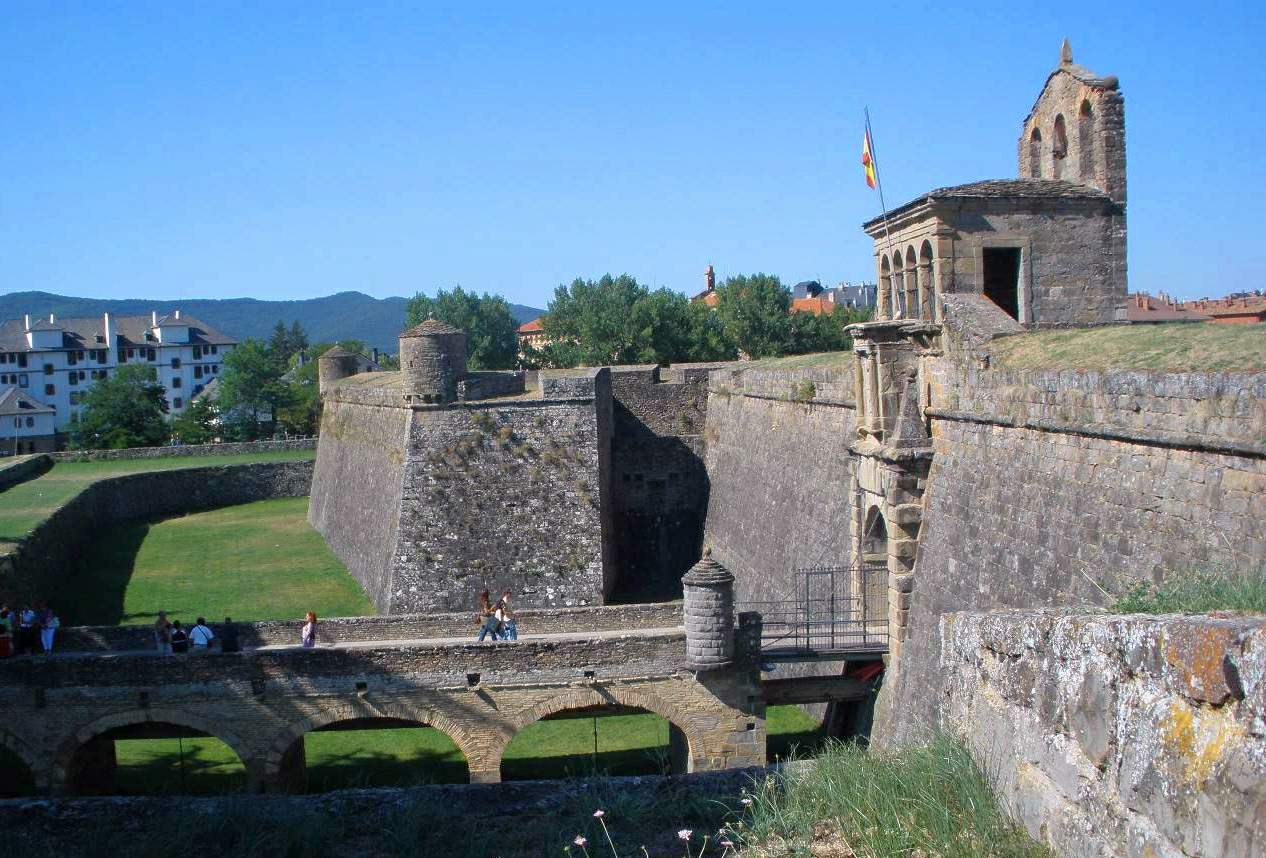
Located in the Aragón Valley, it is the ideal place to discover the Aragonese Pyrenees and its ski resorts. In addition, Jaca is a place that has witnessed the Roman, Arab and Catholic eras throughout history, and has buildings belonging to Modernism.
3. Cangas de Onís (Asturias)
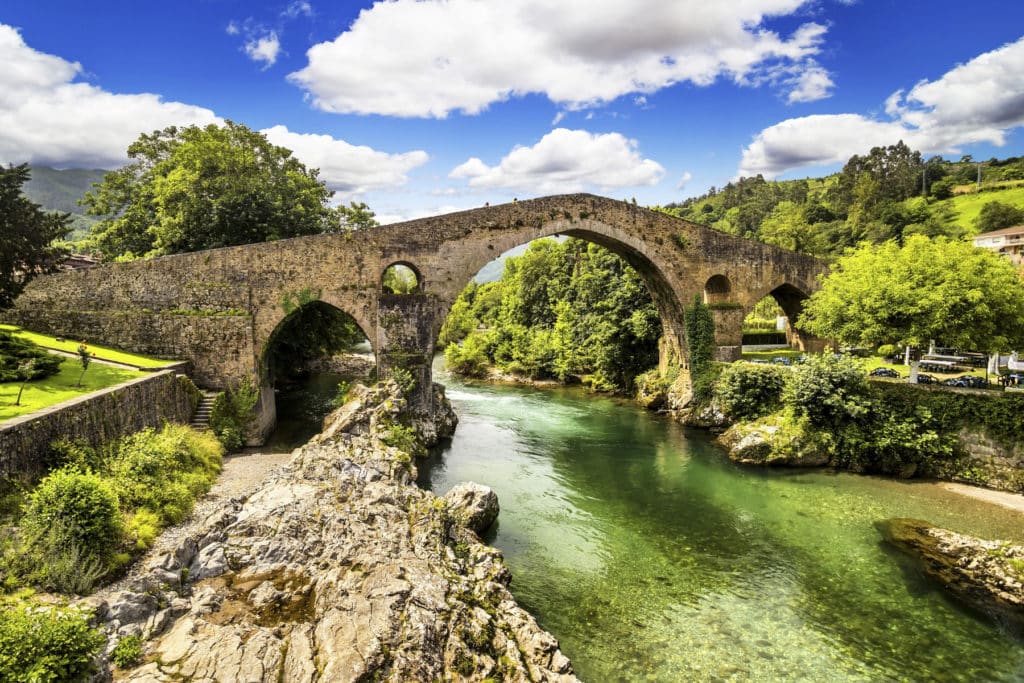
Cangas de Onís is one of the towns in Asturias that attracts the most tourists due to its proximity to the Sanctuary of Covadonga and the Lakes of Covadonga.
4. Santillana del Mar (Cantabria)
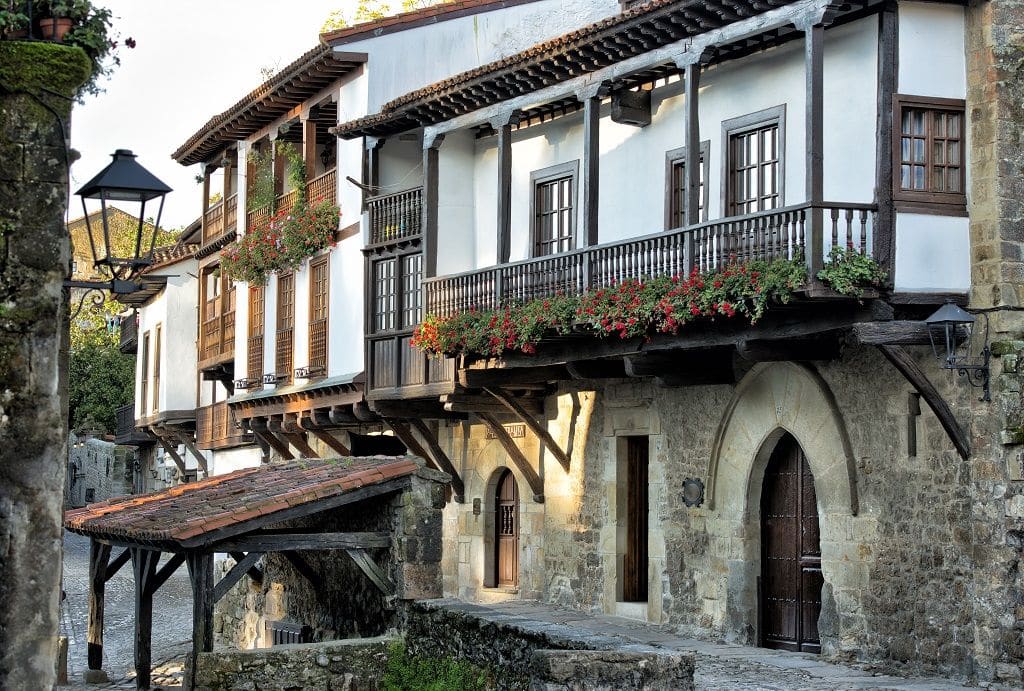
The town of Santillana del Mar is located on the Costa de Cantabria and attracts attention thanks to the cobbled streets, the facades of old houses and the balconies full of flowers.
5. Yeste (Castilla-La Mancha)
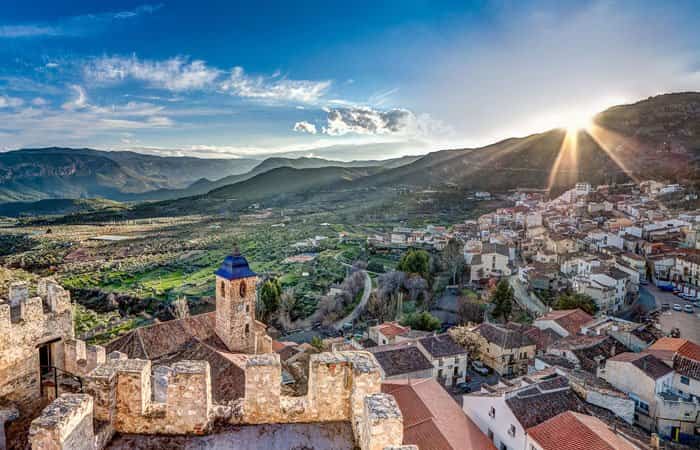
Yeste belongs to the Sierra de Segura and has an important historical heritage of which the castle and the Church of Yeste stand out, in addition to the many medieval watchtowers.
6. Navaluenga (Castilla y León)
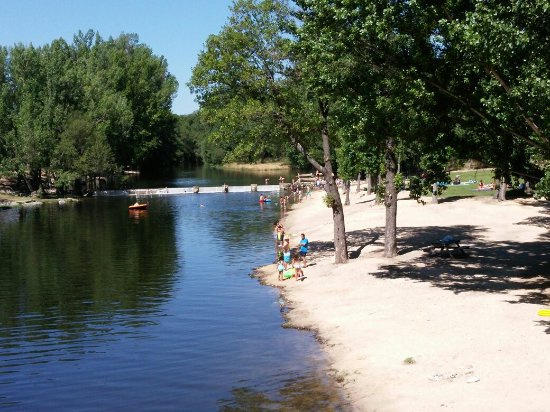
Navaluenga is located in the Vega del Valle del Alberche, not far from the Sierra de Gredos. It is precisely the Alberche River that leaves the so-called Gorges, causing natural pools in its path.
7. Sant Pere de Vilamajor (Catalonia)
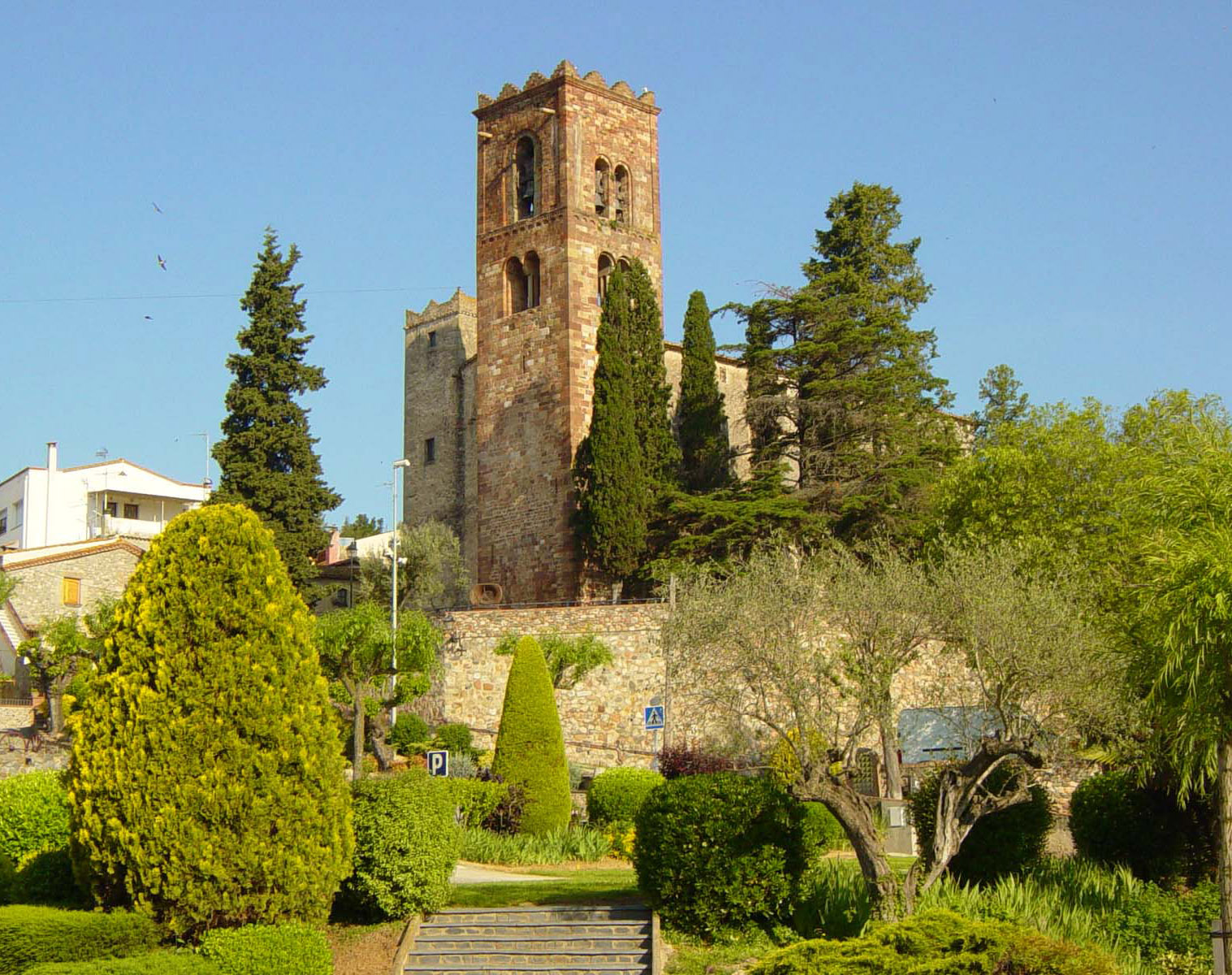
The town of Sant Pere de Vilamajor is famous for its Iberian and Roman remains, where the Counts of Barcelona later lived in the Condal Palace. In addition, it has several modernist buildings.
 0
Like
Published at 11:28 AM Comments (1)
0
Like
Published at 11:28 AM Comments (1)
Discover the most beautiful villlages in La Rioja
Friday, September 8, 2023
La Rioja is the smallest region in Spain, but the territory is home to a range of landscapes and locations typical of a continent. The Mediterranean essence appears in the vineyards, the alpine climate takes shape in the snow-capped mountains, and the rain-fed land creates lush valleys. But, above all, water steals the show. Seven rivers are born in the region and crisscross through it, decorating the landscape. Every step opens onto a new world, without ever leaving the region. Staying at a country guesthouse in a unique natural environment and enjoying a starry night with the Starlight reservation are some of the experiences you can enjoy when you visit La Rioja. Here are 10 of the most beautiful villages in the region worth visiting during your stay...
1. San Millán de la Cogolla
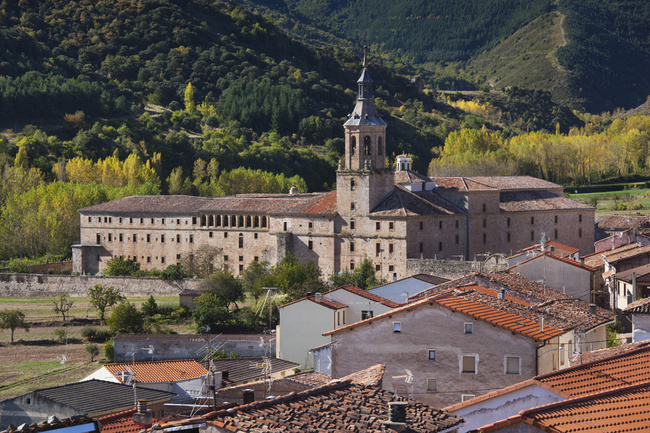
In the middle of the Cárdenas river valley sits San Millán de la Cogolla, a Rioja town founded by the saint of the same name and linked for centuries to the Pilgrim's Route to Santiago de Compostela. The deep-rooted monastic tradition of the town can be seen in the beautiful collection of historic buildings it houses, where the Monasteries of Suso and Yuso, both declared World Heritage Sites, are outstanding. The importance of San Millán de la Cogolla is also due to its status as the cradle of the Spanish tongue, since the first documents written in this language are preserved here.
2. Nájera
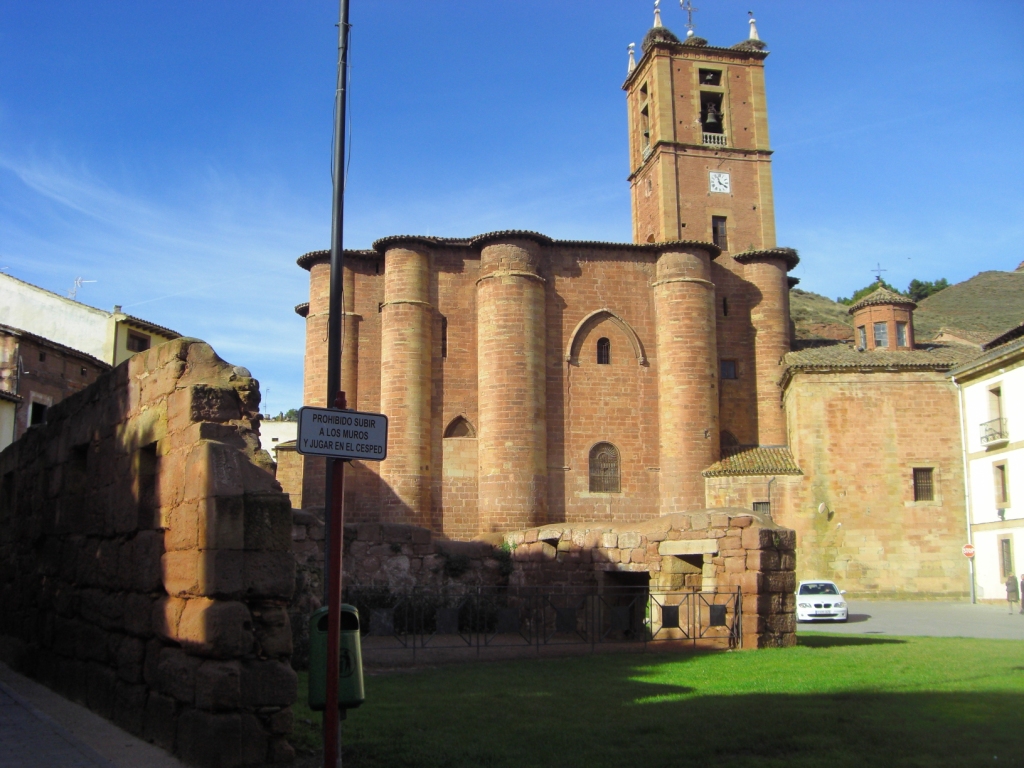
Situated 27 kilometres from Logroño, Nájera is one of the towns on the Pilgrim's Route to Santiago de Compostela, thanks to King Sancho III, who in the 11th century modified the route so that it became a staging post for passing pilgrims. The town is divided by the river Najerilla and an exceptionally important monument stands on its banks: the monastery of Santa María La Real. Built in 1032, it underwent several modifications in the 15th century. Its fortress-like external appearance contrasts with the ornamental beauty of the cloister of the Caballeros (knights), so-called because of the great many nobles buried here. The church houses a magnificent piece of carving in the choir, a brilliant high reredos with a Romanesque image of Santa María La Real, the Royal Pantheon, bearing the tombs of some thirty monarchs; the mausoleum of the Dukes of Nájera and, in the crypt, the cave where according to legend the Virgin appeared before King Don García, who ordered the construction of the site. Facing the monastery is the Nájera History and Archaeological Museum, with sections on prehistory, the Romans, the medieval period, ethnography and painting, as well as material from the Nájera region. Also of interest is the Santa Cruz parish church and its lantern resting on pendentives, situated in Plaza de San Miguel.
3. Santo Domingo de la Calzada

Santo Domingo de la Calzada is one of the Rioja towns most deeply marked by the Pilgrim's Route to Santiago de Compostela. Its network of medieval streets declared a National Historic Interest Site, store a valuable heritage, particularly its walls, the Cathedral and the old Pilgrims' Hospital. La Rioja's gastronomy, and above all the famous wines of the region, are some of the attractions the area offers, where it is also possible to visit the cradle of the Spanish language and the monasteries of Suso and Yuso, in San Millán de la Cogolla.
4. Ezcaray
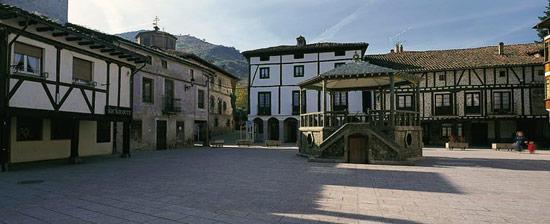
Sitting in the Sierra de la Demanda mountains, on the banks of the river Oja, the town of Ezcaray and its surrounding area are ideal for those who seek peace and quiet. Outstanding in the town centre is the church of Santa María la Mayor, built between the 12th and 14th centuries and declared a Historic-Artistic Site. Its Aragonese Gothic style is unique in La Rioja. The cylindrical towers of the church, which reinforce the corners, give it the appearance of a medieval fortress and palace. On the outside, you will see a beautiful row of balconies, carved on which are the coats of arms of the town's former noblemen. The carved wooden door of the main entrance is plateresque in style and dates from 1532. The west door is mannerist, from the mid-16th century. Inside, you will find a church of a single nave with ogival vaults and medallions. Also of interest is the group of buildings which form the Royal Cloth Factory of Santa Bárbara, from the 18th century, and the dyeing house popularly known as “El Fuerte”. The area around Ezcaray is made up of striking mountain scenery, with streams, forests and peaks over 2,000 metres high.
5. San Vicente de la Sonsierra
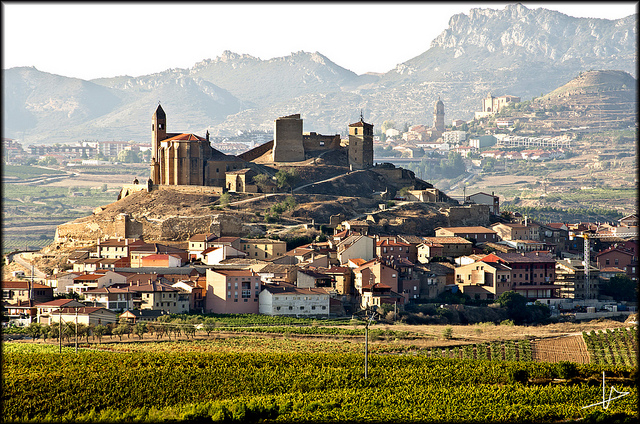
It was created in the 10th century as a fortress for the people of Navarre and together with the Davalillo castle, it formed a line of defence. The town inherited the chains depicted on the shield from the kingdom of Navarre, which was the ruling power. Since the 16th century, the Vera Cruz Guild has organised traditional processions and flagellations during Easter, on Holy Thursday and Good Friday, during the Cruz de Mayo spring festivities and in September. The most important of these is the «picaos» procession, which is when the guild's penitents whip themselves in public. This is an ancient tradition that has not been seen in the rest of Spain for centuries.
6. Sajazarra
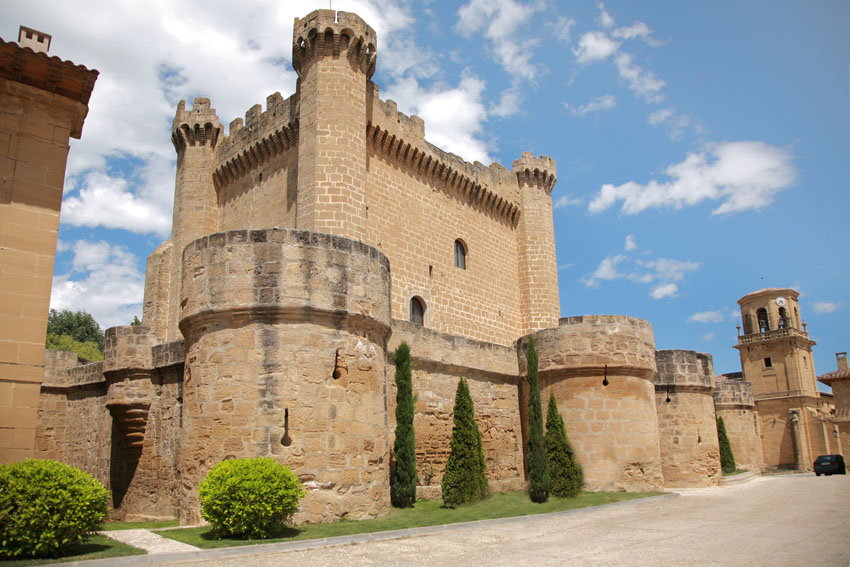
The village is a historic and artistic fortified ensemble with ogival arches on its walls. The impressive castle dated 14th century is one of the better renovated in La Rioja. The Church of La Asunción, from the 12th and 13th centuries, has different styles and is next to the castle. Its interior stores an image of the Virgen de La Antigua.
7. Viniegra de Abajo
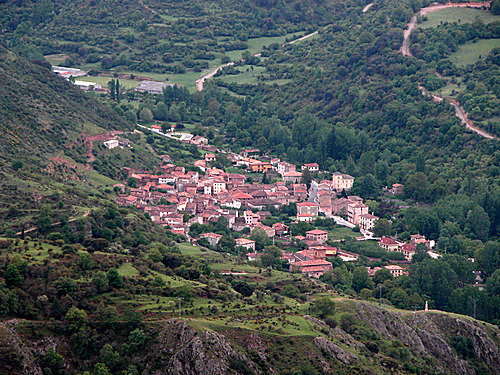
Viniegra de Abajo is one of the 7 Villas in the autonomous region of La Rioja. Viniegra de Abajo is between Camero Nuevo and the Demanda Mountains in the area known as the subdistrict of Upper Najerilla. It stands 881 metres above sea level and is 74 km from Logroño and 50 km from Nájera. The River Urbión crosses Viniegra. The river begins in the Picos de Urbión Mountains which are in the same municipal area as the village.
8. Casalarreina
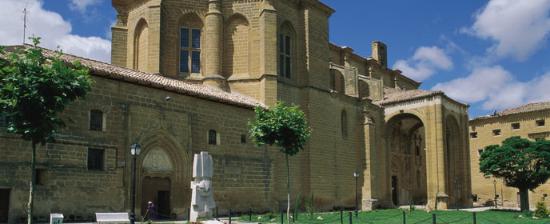
Casalarreina is a municipality and town in the autonomous region of La Rioja. It is in the northeast of the province. The district is under the local jurisdiction of Haro. It is predominantly a farming town: wheat, barley, beet and fruit, particularly apples. In the last few years, the number of poultry and pig farms has grown and as a result, there are more sausage businesses. The Dominican Convent of La Piedad in Catholic Monarchs and Plateresque styles is very interesting. This historic and artistic monument was established in 1508. The church has a five-section nave, clover chancel, and chapels between the buttresses. The portal is very decorated. The monastery hosts a Plateresque reredos dated from the beginning of the 16th century, a reliquary cross in gold-plated silver from the same century and several Baroque reredoses with Baroque images.
9. Briñas

Briñas is a municipality in the autonomous region of La Rioja. It is in the northwest of the province between the Toloño Mountains and the left bank of the River Ebro. The district is under the local jurisdiction of Haro. The Parish Church of La Asunción, dated 17th century, has a single nave with chapels between buttresses, a transept, and an octagonal chancel.
10. Uruñuela
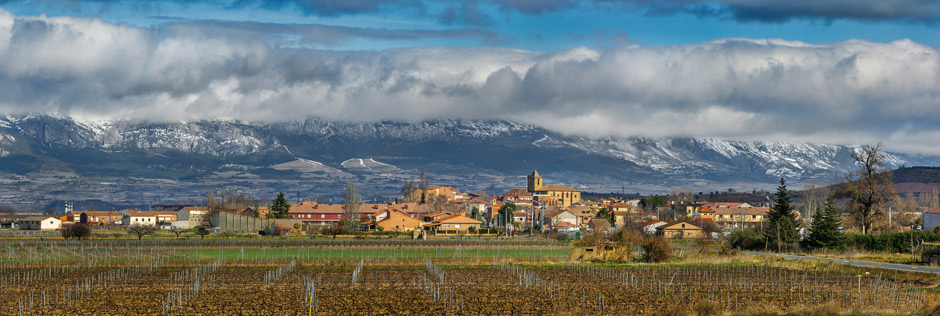
Uruñuela is a farming municipality in the autonomous region of La Rioja, just 23 km from the region's capital, Logroño, and 3 km from Nájera. Uruñuela covers 10.4 km2. Today the municipality's surface area measures 13.9 km2, as on the 10 March 2010, the La Rioja government passed Law 3/2010 modifying the municipal areas of Torremontalbo and Uruñuela. Under this ruling, Somalo left the first of these municipalities and became part of the second. The town is 499 metres above sea level and is part of the district of Nájera. The current population is around 950, although this figure increases considerably in summer. Over the last century, the population decreased by 25%.
 1
Like
Published at 9:11 PM Comments (0)
1
Like
Published at 9:11 PM Comments (0)
It's Water Park Season - Check out the best in Spain!
Wednesday, August 2, 2023
Summer holidays and the beach go together like a bucket and spade, sure, but there are many more ways to get wet and have fun in Spain. Although the beach is undoubtedly one of the best places for cooling off, another great idea is to take your family, grandchildren or some friends to a water park where children will have an awesome time and adults will get to feel like kids again. Here are some of the best water parks in Spain and the first two in the ranking boast worldwide recognition.
1. SIAM PARK - TENERIFE
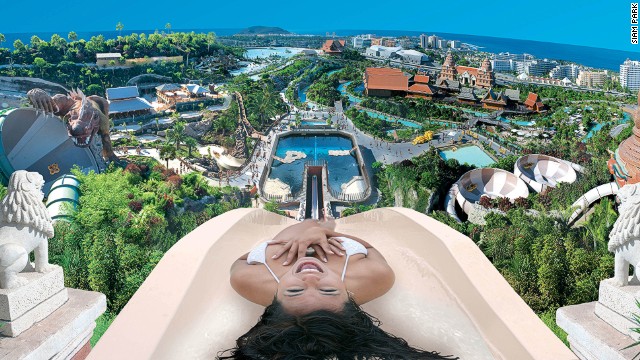
Siam Park, the water kingdom opened its doors in 2008 as the most spectacular theme park with water attractions in Europe and many would consider it the best park in the world.
Siam Park adds a whole new dimension to the leisure offering in the Canary Islands and is located in Adeje, south of Tenerife. Siam Park will amaze everyone with its diverse attractions and exotic settings.
The park covers 185,000m2 of natural landscapes and exquisite oriental design makes it a major new development in tourism, where all the family will experience adventure, excitement and plenty of adrenalin.
Every attraction offers a unique experience and combines the mystery of the ancient kingdom of Thailand, to transport visitors into a world of excitement and magic.
Siam Park offers exclusive facilities for every occasion; events, birthdays, conventions and concerts. It also has its own surf school where both adults and children can learn to surf.
2. AQUALANDIA - BENIDORM
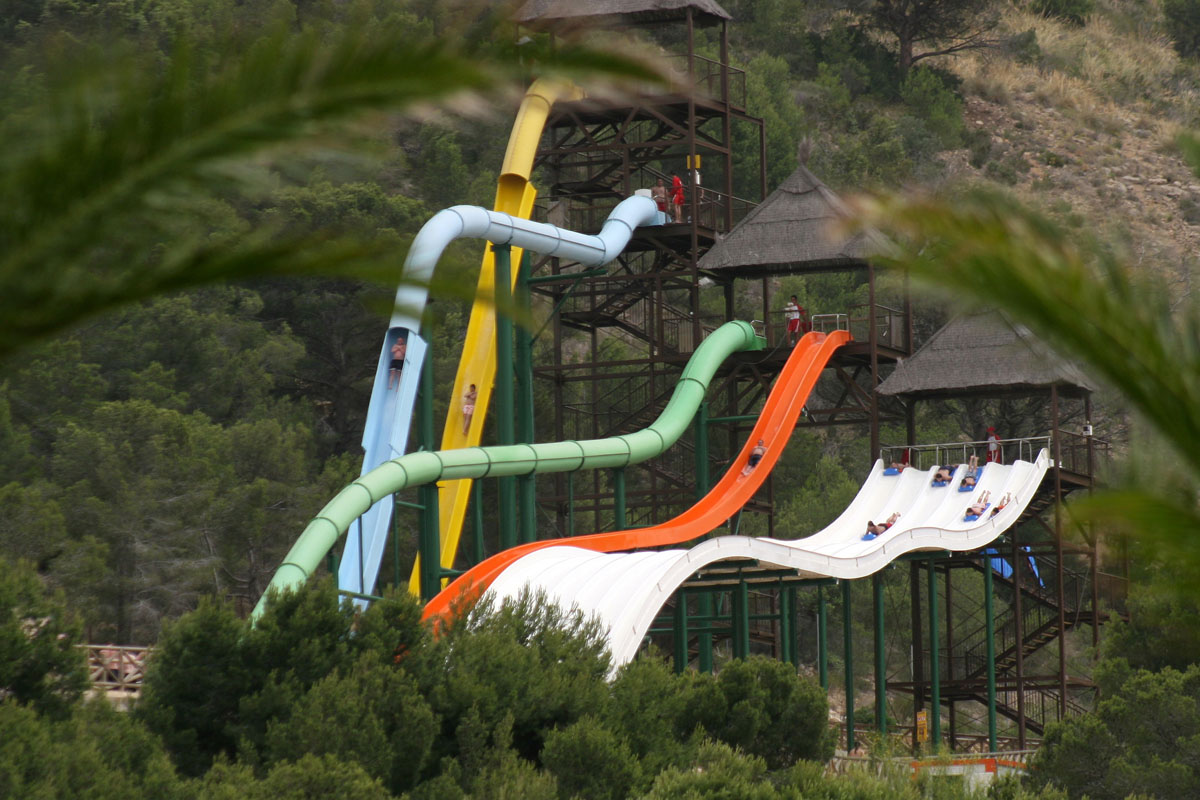
Aqualandia in Benidorm, the first water park built in Spain, opened in 1985. Since then it has been not only one of the largest water parks in the world but also ranks among those which offer the most attractions and facilities as well as outstanding customer service.
Aqualandia is an extensive natural area where you can enjoy a wide variety of water activities and many other amenities. It covers an area of 150,000 square metres and has 50,000 square metres of free parking.
With their great range of record-breaking water rides, splash pools and other attractions there’s something for everyone to enjoy a fun day out.
3. AQUOPOLIS - MADRID (7 parks around Spain)
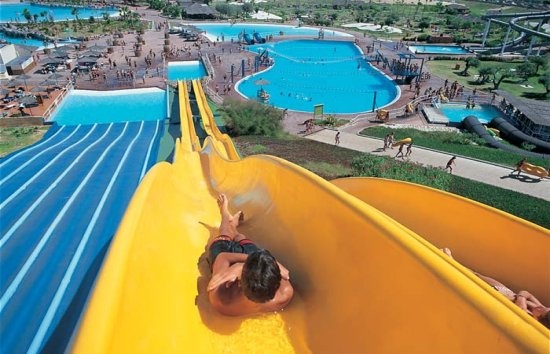
Of course, there are no beaches in the Spanish capital but you don’t need a beach to cool off and forget about the almost unbearable summer heat. Aquopólis is opening a new attraction this summer 2014. Waikiki Jungle, a gigantic, semi-covered water slide for an adventure in pairs on the new-style rubber rings. For a spot of relaxation before returning to the action, there’s nothing like renting one of the cabins in the VIP area. This park forms part of the Parques Reunidos programme, meaning that annual pass holders can enjoy Aquópolis throughout the summer season.
4. AQUATROPIC - ALMUÑECAR

Located in Almuñecar, the Aquatropic water park was opened over 20 years ago, being a reference for entertainment experience on the Costa Tropical. Year after year since opening, they have incorporated new attractions suiting the needs of the visitors, using 35,000 m² of the park.
It offers multiple water attractions such as Tropical Trails, Lake Cascade, the Wave Pool, the Zig-zag, the Kamikaze, the Hidrotubo, the Black Hole, and the Children’s pool and more. As well the parkland is surrounded by extensive vegetation to create shadows and spaces designed for Pic-Nic, to make your visit more enjoyable. The park is an environmental benchmark as it’s the only saltwater water park in Spain.
5. AQUALAND - MALLORCA

It is worth tearing yourself away from the wonderful bays of Majorca for a day to visit Aqualand. Of course, relaxation won’t be the reason because nobody goes there to sunbathe; they go to experience the adrenaline rush brought on by its 17 attractions for both the young and not-so-young. However, if you do want to chill out for a while, this can also be done in the water in either the jacuzzi or on the Congo River - a relaxing journey on which you wouldn’t be the first to close your eyes and let yourself be carried away by the current.
6. COSTA CARIBE AQUATIC PARK - TARRAGONA
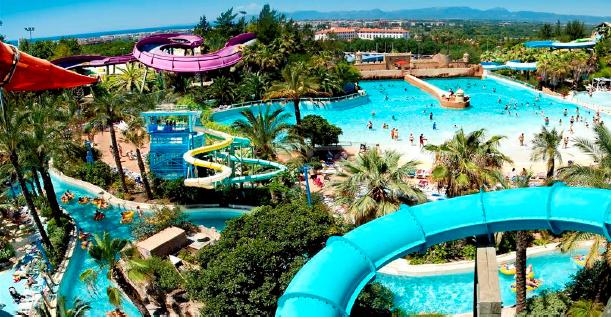
Installed in the heart of the Costa Daurada this amazing water park will plunge you into a refreshing trip that will transport you to paradise in an aquatic adventure. At the Costa Caribe Aquatic Park of Port Aventura, you can practise rafting, go down trepid slides or relax on a lounger indulging yourself with a mixture of the sound of the waves that reach the sand and the tasty reggae rhythm that runs through every corner of this amazing water park.
During its more than 50,000 square meters you can see more than 4,300 tropical plants that are all carefully looked after to the smallest detail to make your visit an unforgettable experience in PortAventura.
7. AQUARAMA - BENICASSIM
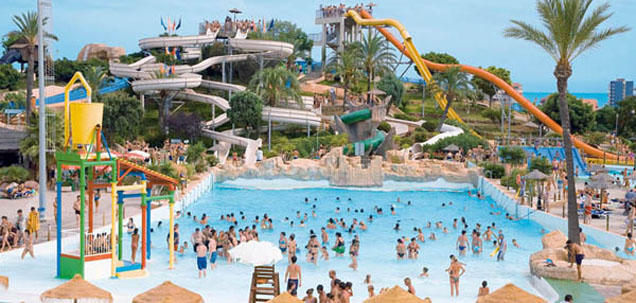
Just 45 minutes from Valencia, Aquarama water park with over 45,000 square meters is packed full of fun for all of the family. There are some amazing slides from the daring slides such as “The Devil’s Drop” which holds the record as the highest slide in all of Europe with a height of 30 meters with the slide angling in at 62 degrees. The Space shot, which is the only one in Spain, the Whirlpool and more and more rides…. For those who like to relax a bit more, there are pools, jacuzzis and wave pools. There is also The Pirates Cave and the Mini Dunes areas which are for the exclusive use of the younger ones of the family.
8. WATER WORLD / AQUADIVER - LLORET DE MAR - PLATJA D'ARO

Here you are entering a world of experiences of two of the finest water parks imaginable, Aquadiver in Platja d’Aro and Water World in Lloret de Mar. In the two water parks on the Costa Brava, you can enjoy various rides, such as wave pools, rapid rivers, and kamikaze…. A set of attractions for children and adults public. Aquadiver water parks in Platja d'Aro and Waterworld in Lloret de Mar are perfect places to spend unforgettable days with family and friends. You'll find the best services in the same water park, for your comfort and experience, such as restaurants, pancake houses, picnic areas and pine forests, where they can relax and enjoy a wonderful environment.
9. AQUA-CENTER - MENORCA
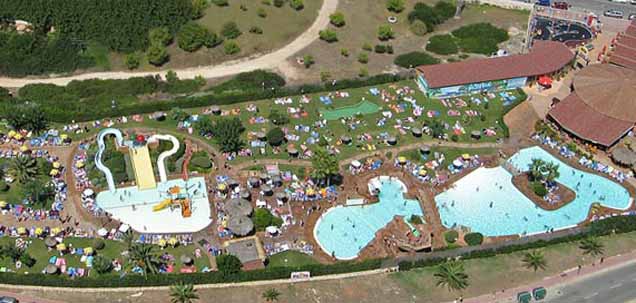
Aqua Center Los Delfines is in Ciutadella, Menorca. Although it only has 12.500 m², it is the only park on the island but offers a great day out for the whole family with the most modern water attractions: Black Hole (2-seater float), Adventure River (Single seater float with 91,5m run), Giant Slides, Water Tunnels, Children's Water Shuttles, Kamikaze, Jacuzzi and so on.
10. PARQUE ACUATICO MIJAS - FUENGIROLA, MIJAS
 12.46.13 - Copy 1.png)
Park Aquatico Mijas is located in Fuengirola, Mijas, Costa del Sol. The park offers great attractions such as water rides for all ages, shows, beach areas, wave pool, and Spa treatments.
 0
Like
Published at 12:00 PM Comments (0)
0
Like
Published at 12:00 PM Comments (0)
Wine Festivals In Spain
Saturday, July 29, 2023
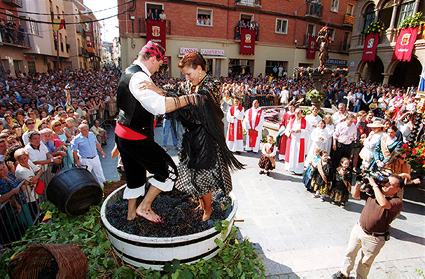
Soon everyone will be celebrating their local wine festivals, same large and some small, but all celebrating "la vindimia": the grape harvest. Take note of the one near you and pay a visit this year...
1 – 8 September , Ciudad Real
Valdepeñas Wine Festival
D.O Valdepeñas
Local cuisine really takes centre stage with this festival. Besides wine tastings that are discussed and paired with local produce, this year the city is holding the 2nd Oenogastronomic Conference, “Saborea Valepeñas”. Every year, a person is awarded the prize for “Best Grape Harvester of the Year”.
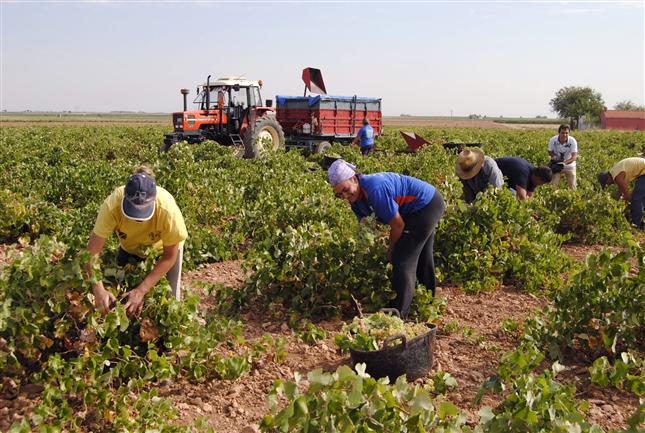
5 – 8 September - Cordoba
Montilla-Moriles Grape Harvest Festival Córdoba
D.O Montilla-Moriles
Every year they appoint a master of honour who is given the keys so they can safe guard and defend the wines of the region for the whole year. Declared of National Tourist Interest, its most important acts include competitions for all the venenciadores (wine pourers), bottle turners and coopers in the region.
9 - 14 September
Wine Festival in Jerez
D.O Jerez-Xérès-Sherry and Manzanilla
Cádiz can boast of being European wine city for 2014. The acts include activities for children, such as Children’s Venencia Competition, where they pour wine using a traditional, long handles dipper. Using a venencia to decant Jerez wine is quite an art that has to learn from a young age.
14 September
La Rioja Alavesa Grape Harvest Festival, Labastida
D.O Rioja
It is a travelling festival that began 21 years ago in Laguardia. The 2014 edition will be held in Labastida, which will be in charge of bringing together the most important festivities. However, all the villages will be present in the same way. This is demonstrated in the Wine Competition in which only villages that produce D.O Rioja can take part; so all the villages in the area are legible. There is also the possibility of tasting the wines produced in the villages that comprise La Rioja Alavesa and some wineries, such as Eguren Ugarte, organise activities for the family that range from picking grapes to treading the fruit after it has been harvested- the part children love the most.
14 - 15 September
Cigales Wine Festival,
Valladolid
D.O Cigales
Cigales is the ‘cradle of claret’ and its wine festival is one of the oldest in the country. As a result, it has been awarded the title of Festival of Regional Tourist Interest. Besides the traditional treading, for two days a wide variety of activities are held, such as talks on the world of wine, tasting competitions and a wonderful medieval market, which gives the festival a past times feel, times when wine also played a starring role.
20 September
Wine Festival in Logroño
D.O Rioja
2014 commemorates the 58th edition of this tradition; it starts off with the Pisada Popular, a public grape-treading event that takes place with the purpose of extracting the first must, which is then dedicated to the city’s patron saint. Another great wine event, known as the Quema de la cuba (the burning of the cask), brings the festival to an end. Continuing with the aim of becoming a gastronomic benchmark, the “Gastronomic Week” is also held during the festival.
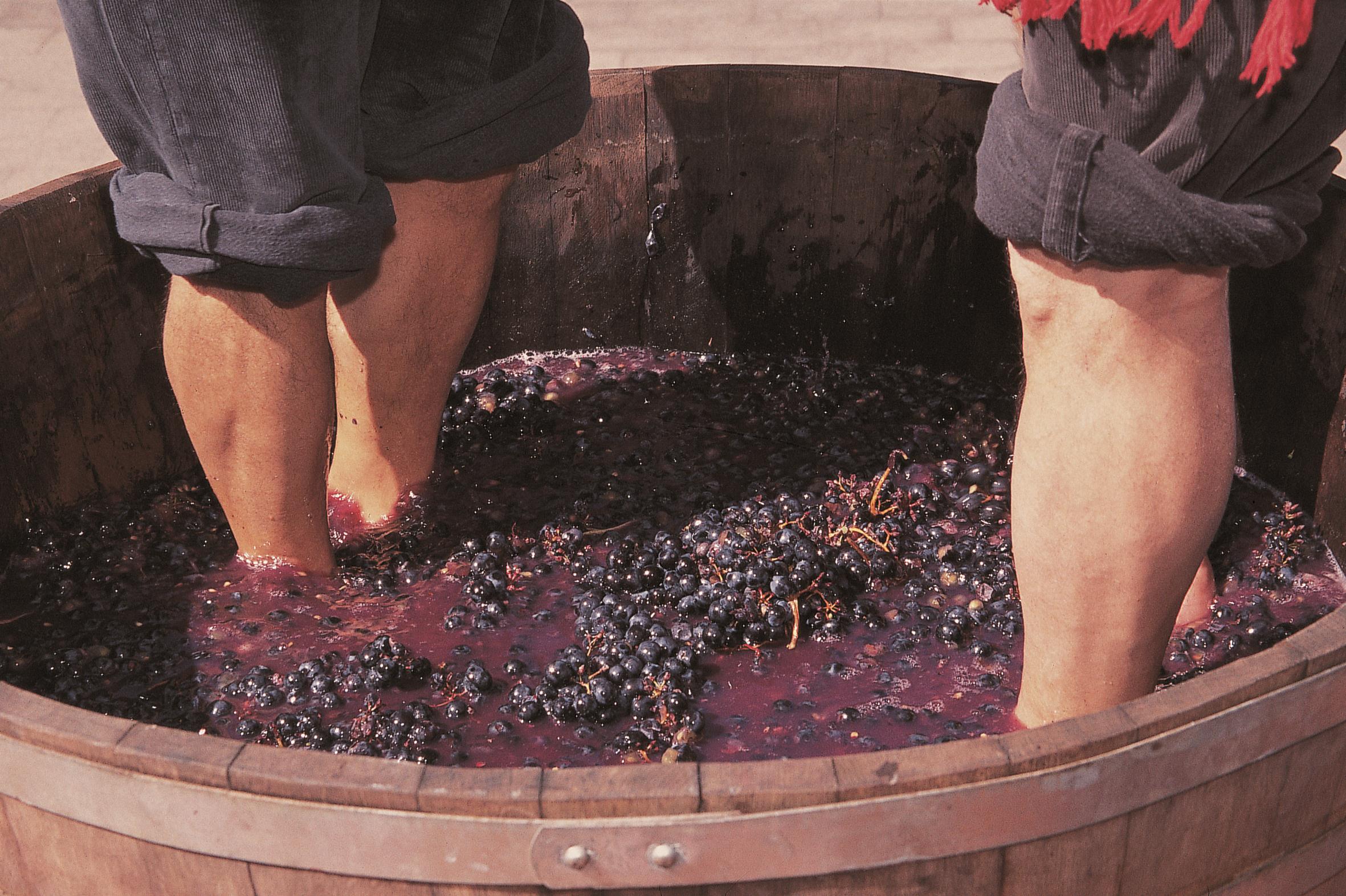
28 September
Grape Harvest Festival in Sotillo de la Ribera
D.O Ribera del Duero
Sotillo de la Ribera has been holding a great party every year for 36 years now. It is dedicated to its wines and has guided tours and tasting events, not only of wine but also oil. Some of the wineries in the area also organise special activities to celebrate the festival, including a demonstration of how the local residents used to harvest the grapes in former times.
28 September - 6 October
Grape Harvest Festival in San Miguel de Tabagón, O Rosal
D.O Albariño
A week when there is no chance of getting bored thanks to a complete programme of activities that unsurprisingly, are all related to wine and the grape harvest: Talks on technical aspects of grape-harvesting, wine, gastronomy and photography competitions, as well as a pageant with all the local inhabitants and tourists who decide to visit this town in Pontevedra taking part.

3 - 5 October
Cavatast,
Cava and gastronomy exhibition in Sant Sadurní d’Anoia
Cava is the big appeal of this region, one that for the last 18 years has decided a special gastronomic display of products that are the perfect match for these bubbly wines. The activities include a ride on an electric bicycle along the paths that go through the vineyards in the area, the route coming to an end with a local chocolate-tasting event.
3 - 5 Octubre
Riberjoven, Young wine and Gastronomy Festival, Peñafiel
D.O Ribera del Duero
This is the only festival in the country that is dedicated to young wine and it is precisely by taking this concept into account that they offer activities typically associated with children but which are adapted for older people, such as the Grape Harvest Storyteller for Adults. Although in Peñafiel children have a significant role in the festival- they perform a play related to the grape harvest and participate in different workshops.
10-13 October
Cangas del Narcea Festival, Asturias
D.O Vinos de la Tierra de Cangas (Cangas Wine)
The Festival begins when the local hotel and catering professional award the Golden Vine prize to a person with links to Cangas and its wine. The demonstration of the classic grape treading is carried out in a traditional way; a scene is staged with a barrel that is transported on a typical cart. All the restaurant in the area are involved in the festival and while it lasts diners can enjoy a typical grape harvest menu.
10 - 12 October
Grape Harvest Festival in Rueda
D.O Rueda
Despite being well known for its white wines, Rueda also produces some exquisite red wines. So everyone can try them, a marquee is set up in the town’s main square where winery owners offer people the chance to taste their wines and typical local products. In addition, some wineries organise Open Days. The first must extracted from the traditional Grape Treading is given to the participants.
12 - 13 October
Verdu Grape Harvest and Wine Festival
D.O Costers del Segre
This Lleida town runs numerous competitions related to grape harvesting and its associated professions, with competitions such as the one for picadors (grape treaders), porrón lifters (people who lift and drink from traditional wine pitchers), vine throwers; there is even a grape carrier race. To make sure you have enough energy to compete, there is nothing better than tucking into a grape harvester’s breakfast. They are served every day during the festival. If you are looking for something quieter, then you can go to the gastronomic exhibition held in Verdu Castle, which opens its doors especially for the occasion.
14 – 22 October
Wine Festival in Toro
Zamora
D.O Toro
These days it is normal to see the roads around the city jammed with carts that are overflowing with all kinds of utensils for harvesting grapes, just like in the old days. A festive pilgrimage travels along the main streets announcing the start of the harvest. Another quite strange annual tradition is the Wine Fountain, during which a large cask is set up in the bullring from which the young men have to drink whilst trying to out of the way of the bulls that are guarding the cask.
 1
Like
Published at 12:06 AM Comments (0)
1
Like
Published at 12:06 AM Comments (0)
10 'must-see' places in Galicia
Saturday, July 15, 2023
Galicia is water, land, wind… Galicia is feeling, passion, joy… Galicia is art, history, legend… It’s everything that makes you dream and marvel… Galicia is a land you’ll begin to discover little by little, step by step… Here are 10 places you mustn't miss, in no particular order:

1. Ribeira Sacra
The Ribeira Sacra, home to the largest concentration of Romanesque churches and monasteries in Europe. The Ribeira Sacra is a district marked by the River Miño and River Sil, which have shaped its spectacular landscape as they wind their way through the mountains. When this is combined with the faith and spirituality that can still be felt in the numerous monasteries dotted throughout the area, it means that this corner of Galicia cannot fail to appeal to all of your senses.
To mention the Ribeira Sacra is of course to mention wine, something that becomes obvious as soon as you set foot in the district: one of the most characteristic features of its landscape is the famous “socalcos”, the steeply terraced vineyards that run down the hillsides. And whilst you’re there, don’t miss the opportunity to taste some of the fantastic local wines, the product of one of the five Denomination of Origin wine-growing areas in Galicia, to which the district gives its name.

2. City walls of Lugo
The walls of Lugo are the best-preserved example of Roman military fortifications anywhere in the world. Designated a UNESCO World Heritage Site, the walls are an outstanding example of a way of building that exemplifies a variety of significant periods in the history of mankind.
From their Roman origins, through the tumultuous period of the Middle Ages and down to the ground-breaking and revolutionary 19th century, they constitute a unique monument that displays the different facets of the way in which the city of Lugo, in itself a conservation area of major importance, has evolved from the original Roman settlement of Lucus Augusti.
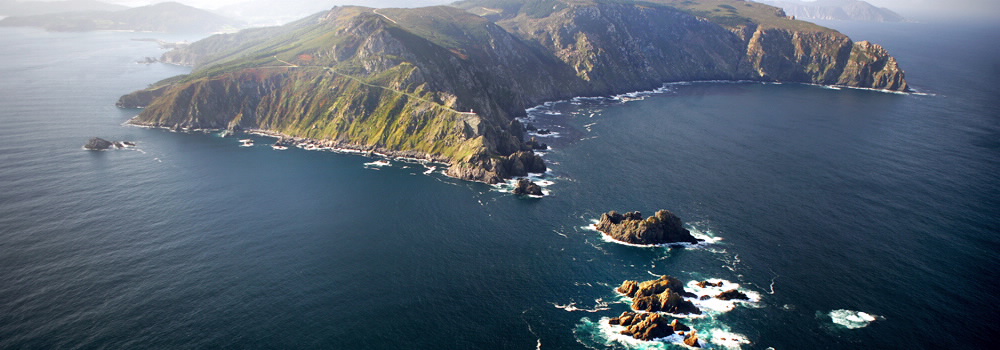
3. Serra da Capelada
Serra da Capelada boasts some of the tallest cliffs in Europe.
Their highest point is Vixía Herbeira, 620 metres above sea level. From this vantage point, you can appreciate the full grandeur and size of these cliffs, second only in height to the sides of the Norwegian fjords, which plunge almost vertically down to the sea, at an angle of over 80º
The views from here are absolutely spectacular: a wonderful panorama of the mighty Atlantic Ocean and the rugged coastline on either side of Santo André are without a doubt some of the best to be found anywhere along the whole of the coast of Europe.
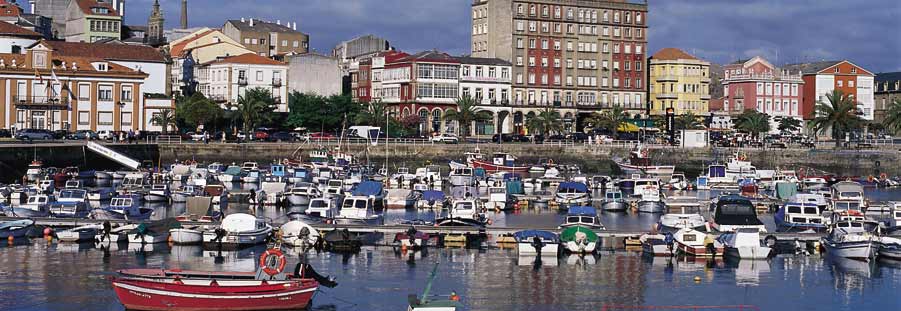
4. The Ferrol of the Age of Enlightenment
Although Ferrol was originally a town with a strong fishing tradition, during the 16th century its port started to become home to the ships of the Spanish Royal Navy. Subsequently, the monarchs Philip V, Ferdinand VI and Charles III were to be the driving force behind the construction of this magnificent complex, making the city the principal military base in Northwest Spain and the largest naval base of its day in Europe. On the inside, which can only be visited with prior permission, you will find the Sala de Armas (Armoury), until recently a training barracks and now residential quarters for Spanish Navy Marines deployed in Ferrol. You can also visit the Museo Naval (Shipbuilding Museum) and the Dique da Campá, one of the largest dry docks in the world. And you mustn’t forget Exponav, a permanent exhibition devoted to the world of shipbuilding.

5. The Tower of Hercules
In A Coruña, we can marvel at the Tower of Hercules, which dates back to Roman times and is the oldest working lighthouse in the world, the reason why it has been declared a UNESCO World Heritage Site. The Farum Brigantium was built by the Roman Empire at some time between the end of the 1st century AD and the beginning of the following one. Located at the entrance to the harbour of A Coruña, this magnificent lighthouse was designed as an aid to navigation along the rugged Galician coast, a strategic point on the sea route linking the Mediterranean to northeast Europe.
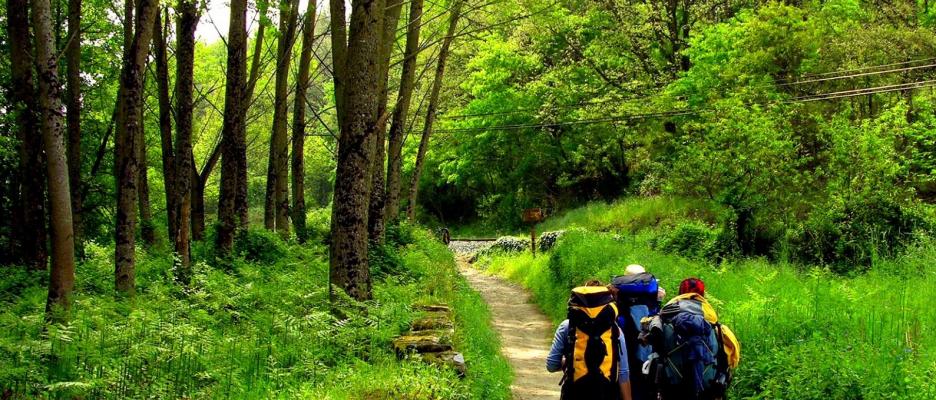
6. The Way of St James
You can’t leave Galicia without having walked at least part of the Way of St James.
The pilgrims’ route to Santiago played a fundamental role in the exchange of cultures between the Iberian Peninsula and the rest of Europe in the Middle Ages. For this reason, the Way of St James was nominated as the First European Cultural Itinerary by the Council of Europe. The so-called French Route, which has the longest tradition and is the best-known outside Spain, has also been declared a UNESCO World Heritage Site. Starting in Roncesvalles (Navarre), it finally reaches Santiago de Compostela some 750 kilometres later. A route, therefore, which links Europe with northern Spain, passing secluded churches, bridges, cathedrals, monasteries and other such places of interest, accompanied by a permanent backcloth of greenery.
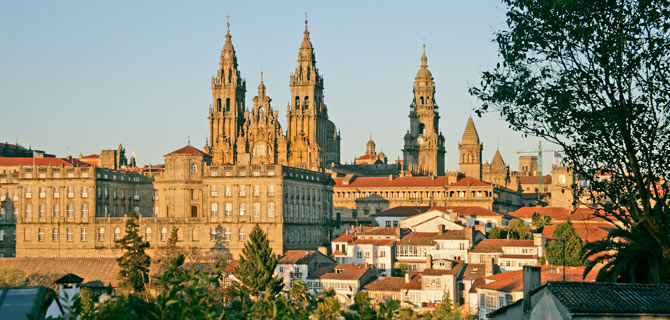
7. Santiago de Compostela
Santiago de Compostela has been the Christian pilgrims’ destination since the 9th century. From as far afield as the Baltic or the North Sea, thousands of pilgrims came on foot to the shrine of St James in Galicia, carrying their symbolic scallop shells along all the roads leading to Santiago, veritable paths of faith. To this we must add the fact that during the Romanesque and Baroque periods the shrine at Santiago de Compostela had a decisive influence on the evolution of architecture not just in Galicia, but throughout the whole of the north of the Iberian Peninsula

8. Cape Finisterre
Cape Finisterre, the destination of those pilgrims who, after visiting the St James’ tomb, continued their way along the route marked out for them overhead by the Milky Way until they could go no further.
Finisterre was considered during the period of Classical Antiquity to be the end of the known world. In fact, its geographical location and impressive sunsets led Decimus Junius Brutus (the Roman general who conquered Galicia) to believe that this was indeed the place where the sun died at dusk. The area surrounding this headland has been considered a magical place since the earliest times, and legend has it that the Phoenicians set up an altar, the Ara Solis, at which they worshipped the sun. So why not take time to discover this corner of our coast, where the magic of the place will guide your footsteps.

9. The Cíes Islands
The Cíes Islands, one of the archipelagos that together with the islands of Ons, Sálvora and Cortegada make up the Galician Atlantic Islands Maritime-Terrestrial National Park.
Their wealth of plant and animal life, combined with spectacular landscapes, make these islands a major and valuable cultural and environmental asset.
Cíes Islands is nature in its purest state. The boat trip from either Vigo, Cangas or Baiona Baiona, all of which have scheduled catamaran sailings to the archipelago in high season, enables us to admire their imposing presence at the mouth of the Ría de Vigo.
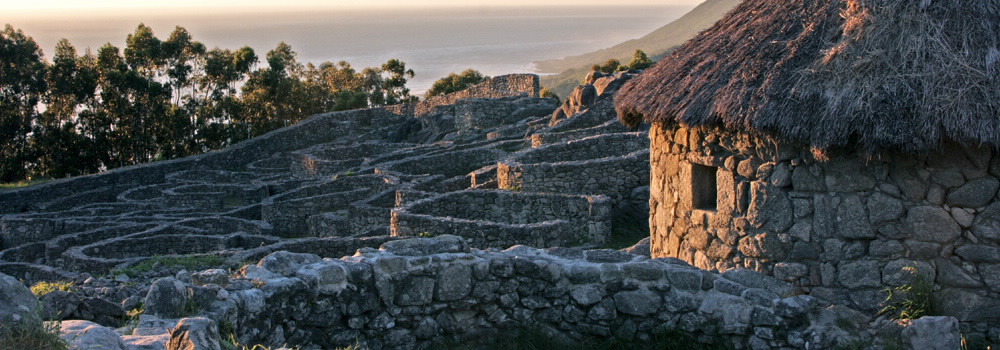
10. Santa Tegra
A Guarda is home to the Celtic hill fort and village of Santa Tegra, from where you’ll be able to enjoy “the best panoramic view of a Celtic hill fort in two countries“. Naturally enough, the views from here are unrivalled: your horizon is bounded only by Galicia, with the fishing town of A Guarda at its head, the mighty Atlantic Ocean and the neighbouring Portuguese coastline.
The view is even more impressive if we travel backwards in time: the inhabitants of this hill fort and village could enjoy it from their very dwellings. However, the site of this settlement wasn’t chosen for its views, but for more mundane reasons such as strategy and security, because from here they could monitor and control the sea traffic and the whole of the mouth of the River Miño.
 0
Like
Published at 2:10 AM Comments (1)
0
Like
Published at 2:10 AM Comments (1)
Theme Parks in Spain 2023
Friday, June 16, 2023
For a long time now, theme parks have stopped being just for kids and have become a good way of releasing some adrenaline while learning about nature, animals or history. Dizzying speeds, free-falls, zip-lines, film sets and crocodiles await you on this journey around Spain's top 10 most exciting parks.
1. Port Aventura, Salou, Tarragona
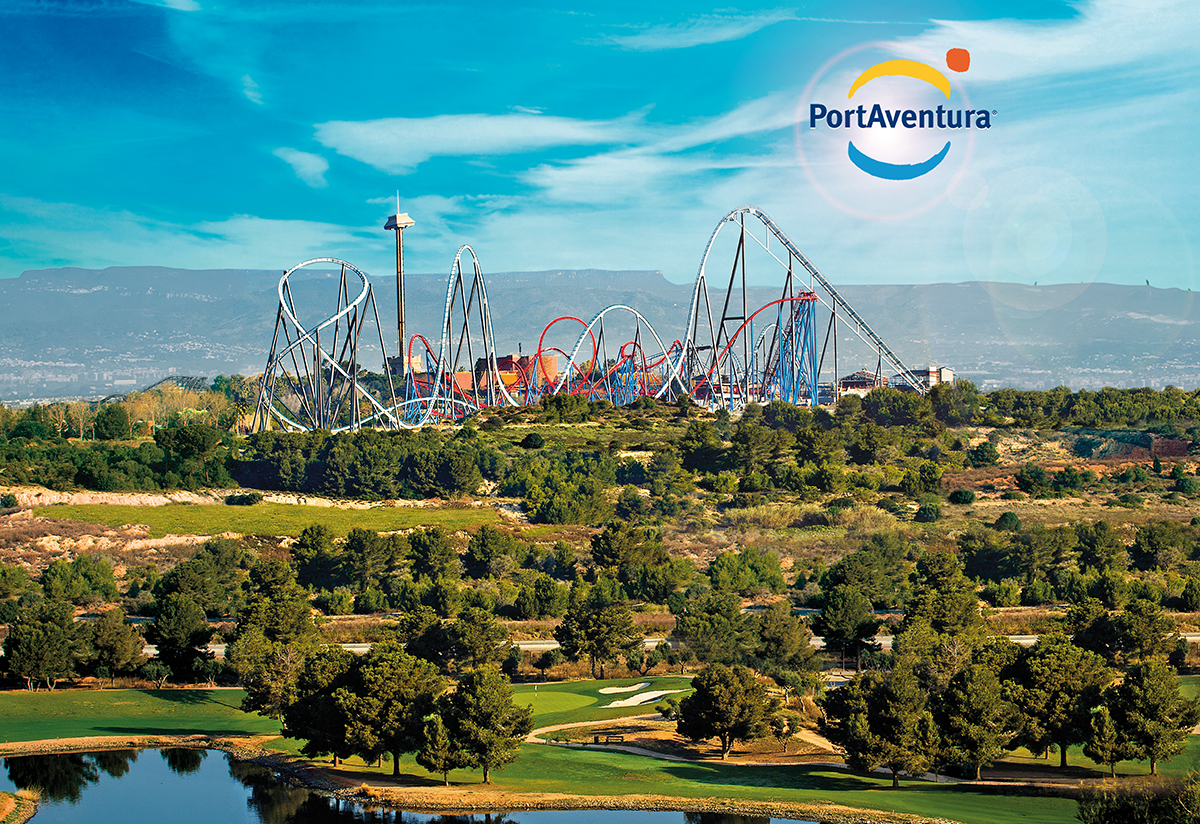
http://www.portaventura.es
You are bound to find what you are after at this park as there is something here for all tastes. As well as the area with rides, there is a water park, four hotels and even a convention centre. The attractions are set in different parts of the world, giving you the chance to journey to places such as China and Polynesia and release some adrenaline on rides like Furius Baco, a roller coaster that takes you from 0 to 135 km/h in only 3 seconds. Meanwhile, there is the area where water takes centre stage, at the Caribe Aquatic Park, where you can experience the excitement of the King Khajuna, the highest free-fall slide in Europe. For those who fancy staying here overnight, there is more fun to be had at the hotels with a wide variety of shows on offer. As good as it gets.
2. Terra Mítica Park, Benidorm, Alicante
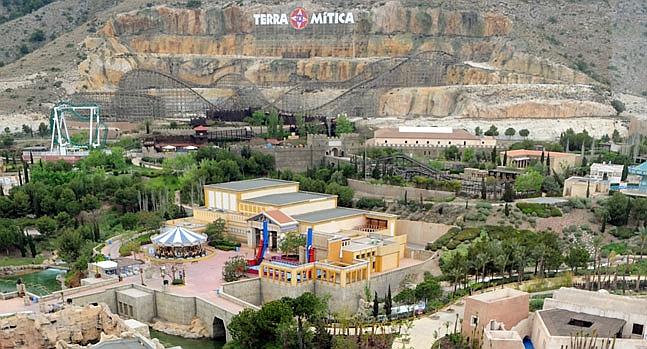
http://www.terramiticapark.com
The theme park where you can learn about ancient history while having fun. Terra Mítica is set up as a journey through ancient Mediterranean civilisations so you can enjoy adrenaline-packed rides such as The Flight of the Phoenix- a one-hundred-metre free fall- as well as shows demonstrating the wonders of Imperial Rome like the Nero circus. The park has three different theme areas: Egypt, Greece and Rome as well as Iberia Park, designed for younger children. Each area has its own rides, shows and restaurants styled on that era. One of the strong points of this place are the sets. It is a real thrill to walk past the Lighthouse of Alexandria and the Keops Pyramid. It can all be taken in from the top of the park's lookout, a 100-metre-tall tower called Infinite, located in Iberia Park
3. Parque Warner, Madrid
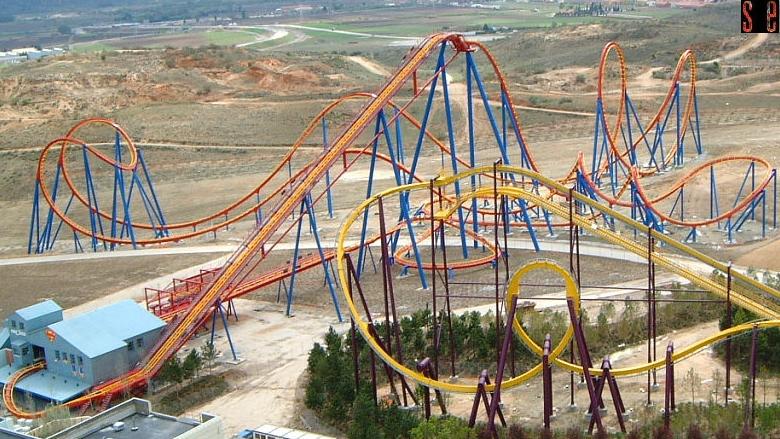
http://parquewarner.com
Walking into Warner Bros Park is like entering the world of cinema. You can walk around sets you will recognise from the big screen while taking advantage of all the fun on offer, from riding the dizzying heights of the roller coasters in Super Hero World to strutting like a star on the Hollywood Walk of Fame. Small children will have the time of their life at Cartoon Village where at any moment they might come across their favourite characters like Bugs Bunny, Daffy Duck or Tweety Bird. When it comes to the rides, you'll have to leave any fear of heights at home if you want to try the Superman roller coaster with its drop of almost 55 metres. Other activities include 3D projections and performances from Westerns, but above all the stunt show by 'Police Academy', making this park one not to be missed.
4. Siam Park, Adeje, Tenerife
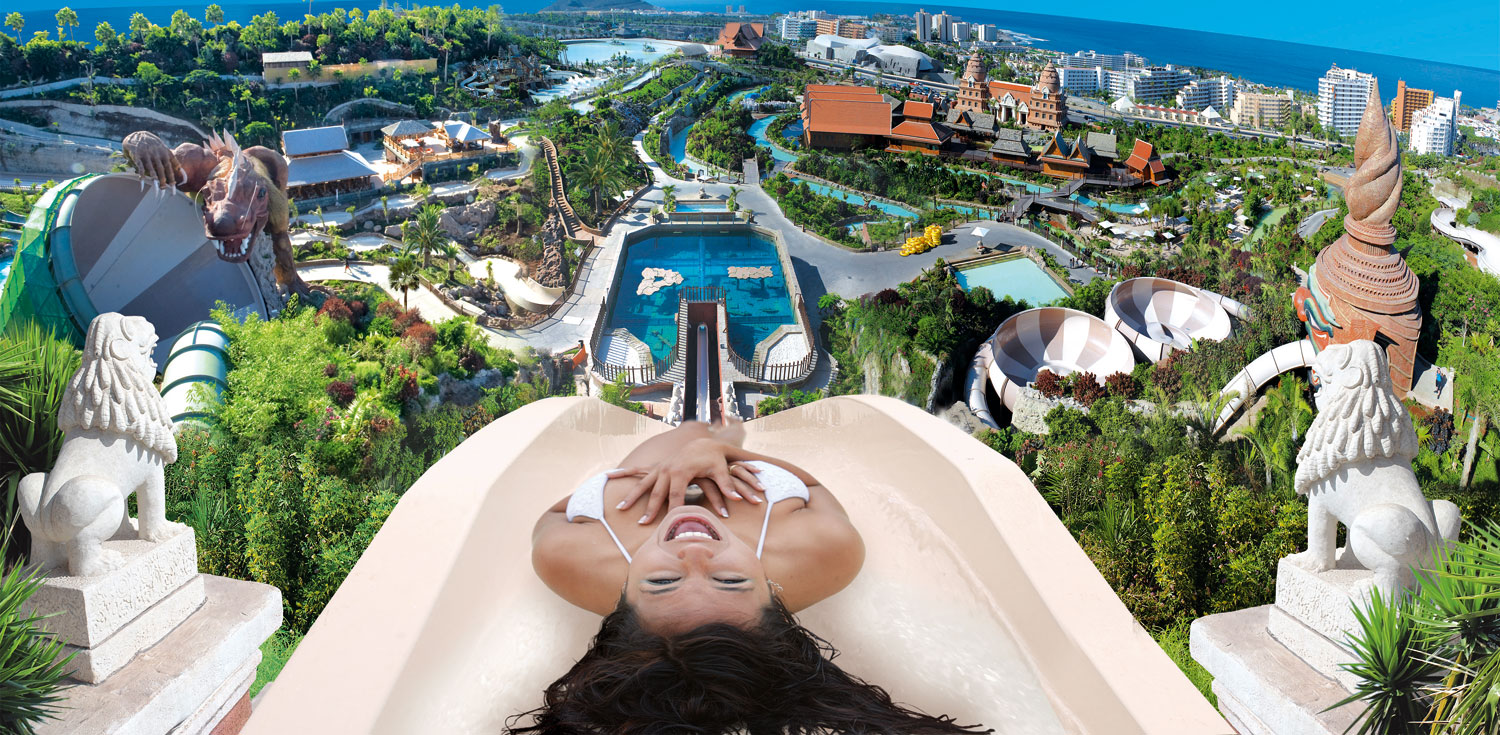
http://www.siampark.net
One of the biggest water parks in Europe, it is a veritable aquatic kingdom with incredible settings inspired by Thai architecture and lush greenery.. Sunbathe on an enormous white-sand beach or following the river through a world of tropical fish, green, leafy landscapes and waterfalls on Mai Thai River are just some of the many activities you can enjoy here. Without a doubt, the ride that will leave you with your mouth open is Tower of Power, an almost-vertical drop of 28 metres that goes through an aquarium full of fish. The Wave Palace is just as good. In fact, the park boasts the largest artificial wave in the world (three-metres high), which will certainly keep surfing fans happy.
5. Isla Mágica, Seville

https://www.islamagica.es
This is another theme park where we can learn a little history while having fun. Isla Mágica took over the site and facilities of the famous Seville World Expo '92 and is themed on the discovery of America. The park is divided into seven worlds of fun and adventure. You can travel to 16th-century Seville with its merchants and maidens, feel the wrath of the gods at Quetzal, discover the new world at Puerta de América or venture into the Amazon jungle. As well as the attractions and the shows, we can find water games and the Cinemoción virtual simulator. The latest attraction at the park is a whole new area with water rides called Agua Mágica, which opens in summer 2014.
6. Dinópolis, Teruel
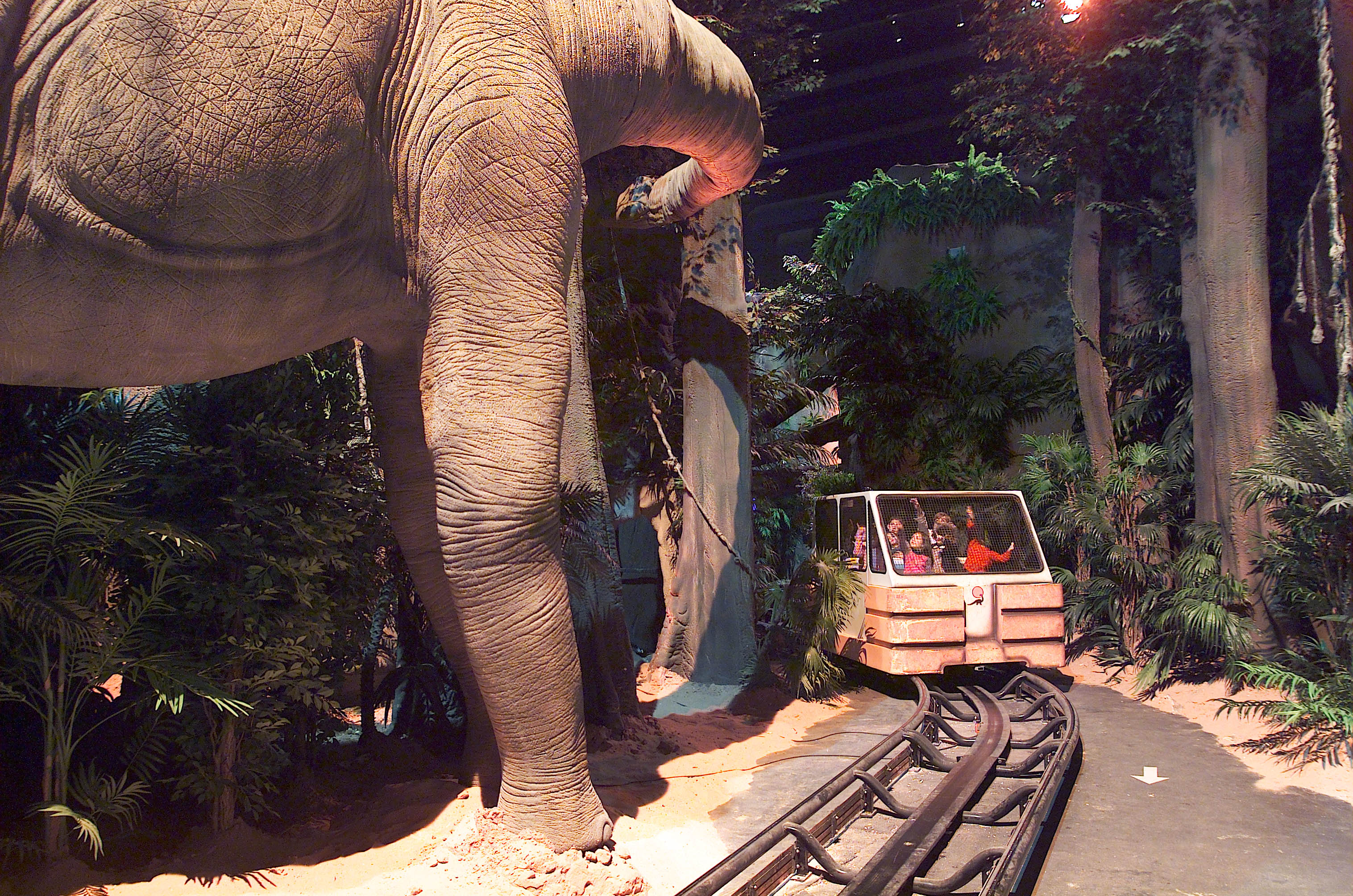
http://www.dinopolis.com
The dinosaur fossils found in the area are the reason behind this original theme park. Dinópolis is the perfect combination of a cultural, scientific and theme park. It offers a learning experience and adventure to all those who dare to take a trip to the source of life on Earth. Although Territorio Dinópolis has parks in seven different locations, the most impressive one is in Teruel. Here you will find all kinds of attractions, giving you the chance to put yourself in the shoes of an archaeologist, travel by boat through the last 65 million years on Earth, see why the Tyrannosaurus Rex was the most-feared dinosaur of the Jurassic Age or have a chat with a Prehistoric man.
7. Faunia, Madrid

http://faunia.es
This is the perfect place to venture into the jungle with its tropical heat and storms, and be surrounded by the many animals that live there. You can find species from all over the planet, from Komodo dragons to sloths. One of this park's biggest advantages is that it allows you to observe the animals without it seeming like a traditional zoo because the enclosures are so well integrated into the park environment. One of the main attractions is The Poles, where you can see up to seven different penguin species. It is definitely worth attending one of the many didactic shows announced in the daily programme and, if your wallet can accommodate it, book one of the interactive encounters with the animals.
8. Oasys, Tabernas, Almería
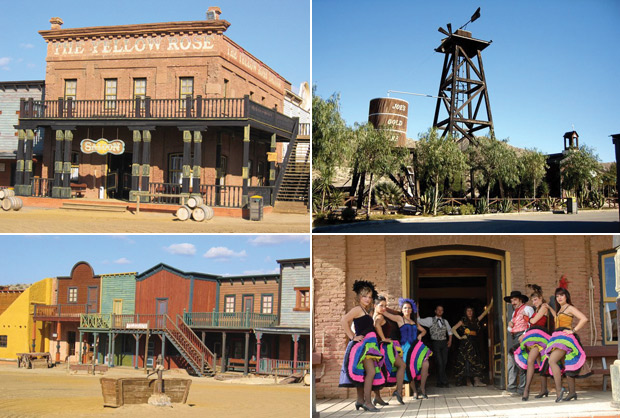
http://www.oasysparquetematico.com
Walking around this original theme park you will feel like Clint Eastwood himself in one of his famous films, fighting outlaws in the middle of the desert. Oasys Park was created with the old film sets where hundreds of Spaghetti Westerns were shot in the 60s and 70s. Entertainment is guaranteed in this corner of Almeria, Europe's only desert, with recreations staged by the park's actors. There is also a zoo reserve with more than 800 animals of 175 different species living in their natural habitat. It is all topped off by a swimming pool with spa, slides and activities related with the environment.
9. Terra Natura, Alicante and Murcia
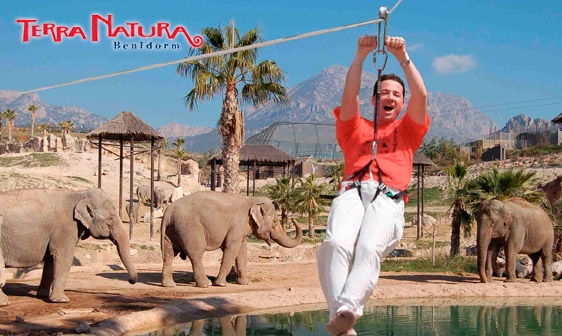
http://www.terranatura.com
Just like Faunia, Terra Natura makes a huge effort to integrate the animals into the general park environment, making the barriers invisible to the visitor to create the impression that they are within reach. As a result, you can observe lions from up close, with just the protective glass standing between you. The park covers an area of over 165,000 m2 and has more than 200 different animal species, surrounded by impressive greenery. To top it all off, there's an aquatic area called Aqua Natura, which opens in summer. It has a wave pool, over a thousand metres of slides and areas reserved for infants so that young children can also enjoy the water.
10. La Selva de l'Aventura, Arbúcies, Girona
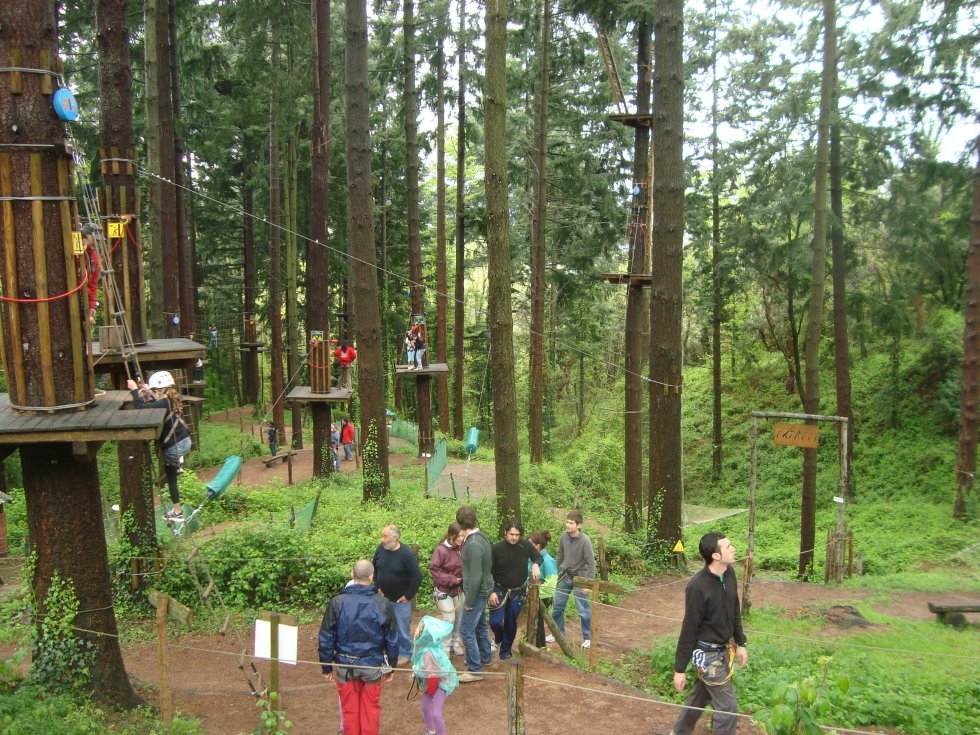
https://www.selvaventura.com/
Set deep in a Douglas fir forest in Montseny, this adventure park offers circuits that take you around the tops of these giant trees, giving you a whole new perspective. People of all ages can enjoy the great outdoors and the feeling of freedom up high on the two circuits as well as the more than 60 activities, such as hanging bridges, swing ropes and zip-lines of up to 140 metres in length. The most adventurous will feel right at home, playing Tarzan between trees up to 15 metres high. Selva de l’Aventura is also the ideal place to hold an original birthday party or a hen or stag party if you are looking for some added excitement. The park is closed to the public in colder months and during the school year it only opens on weekdays for advance group bookings.
 1
Like
Published at 8:21 PM Comments (0)
1
Like
Published at 8:21 PM Comments (0)
10 Place to visit in Andalucia this Summer
Friday, June 2, 2023
More than 1100 kilometres of coastline, two National Parks and cities such as Seville, Córdoba and Granada are the epitome of Andalusia, but there is so much more to this region. Roman ruins, villages that defy gravity, dizzying trails and rivers that appear to be from another planet. This too is Andalusia. Come discover these other destinations, those that aren't on the first page of the travel guides. They will make your jaw drop all the same. This is the ideal place for your next getaway. (In no particular order)
1. Archaeological Site of Baelo Claudia. Roman Andalusia
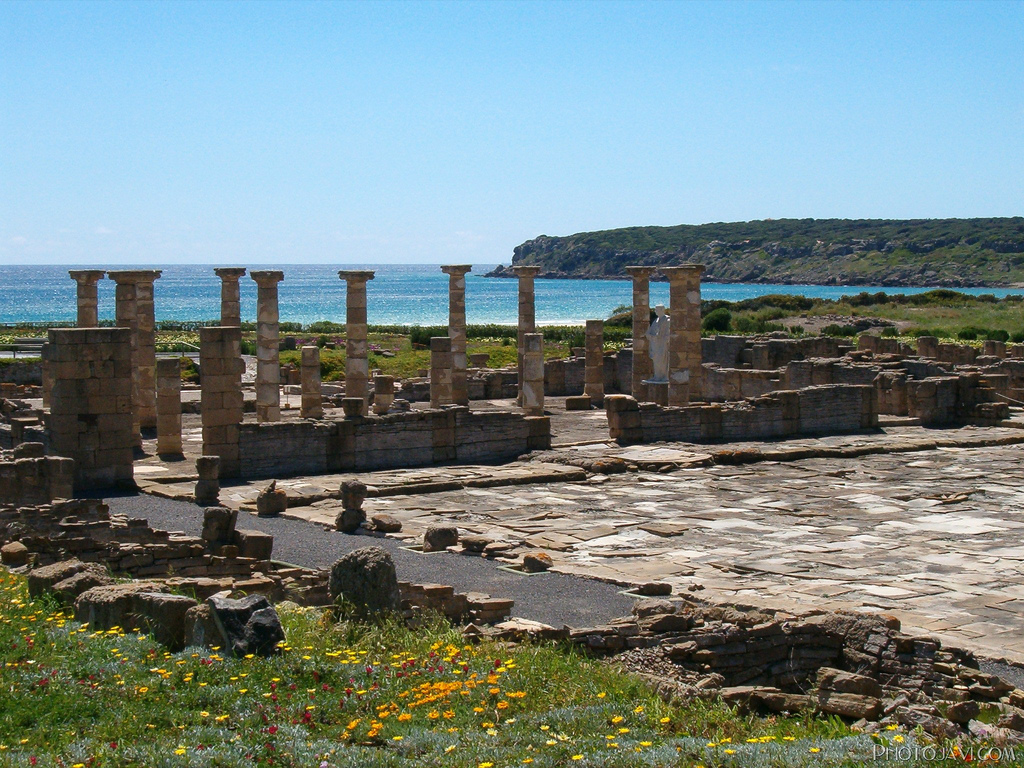
If you like archaeology, here are two places that cannot be missed. The first is in Santiponce (a mere 15 km from Seville), where the remains of the ancient Roman city of Italica (206 BCE.) are found. From here you can see its Roman amphitheatre and part of the outline of its streets. In Cádiz, only two and a half hours by car from here, you'll find the Archaeological Site of Baelo Claudia, one of the best known examples of Roman urban planning.
2. Caminito del Rey, Malaga
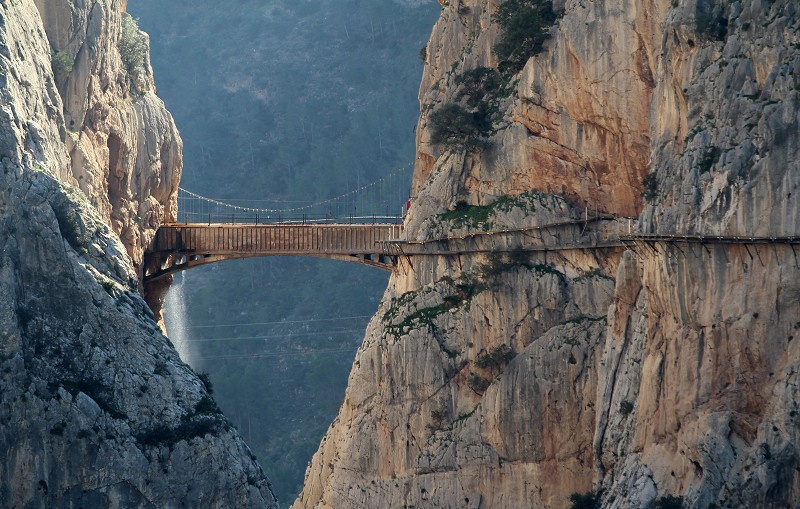
Leave your dizziness behind to enjoy the Gaitanes Gorge on this unique trail. It has a bridge hanging from the mountain's wall that in some stretches is barely a metre wide, and 100 meters tall. Although it has been closed to the public due to poor maintenance, after a long restoration process, it was reopened at Easter.
3. Río Tinto, Huelva.
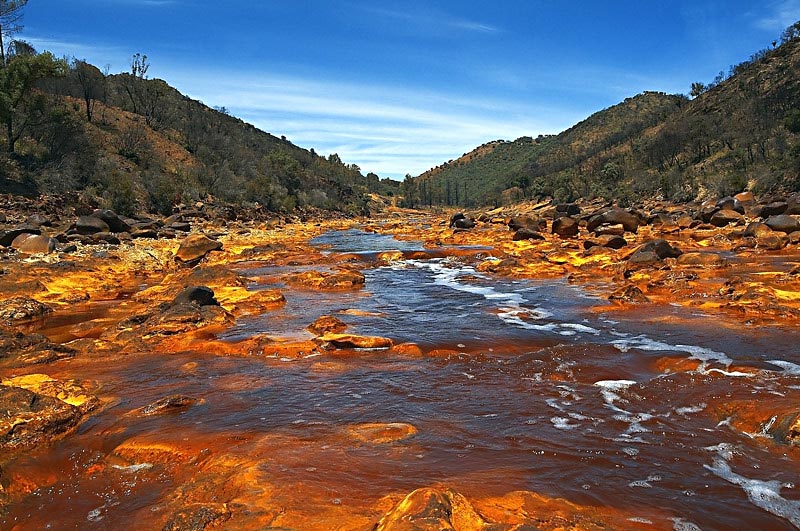
It's as if you were on Mars; the landscape seems dyed red along the Río Tinto, a river running through the province of Huelva. The peculiar colour of this river is due to the high concentration of heavy metals in underground aquifers. In addition to gazing at the river's extraordinary beauty, you can get closer to the Río Tinto with a visit to its Mining Park, where you will learn how the region was transformed thanks to mining.
4. Vejer de la Frontera, Cádiz.
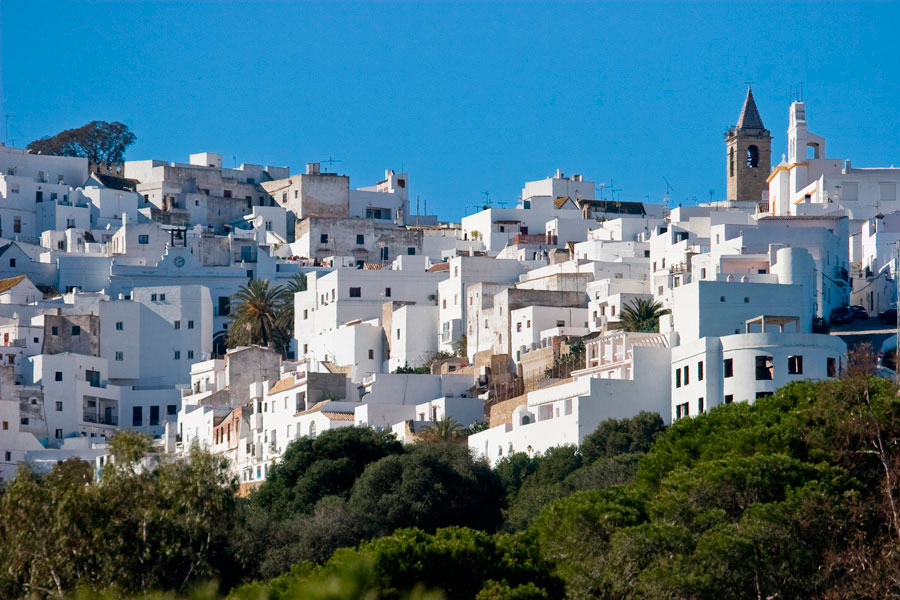
This is one of the white Andalusian towns where you'll run the risk of running out of memory on your camera, especially at its walled fortress which is perfectly preserved. Situated on a hill, Vejer shines almost to the point of making you squint. Nevertheless it is necessary to keep your eyes open to appreciate its incredible views that allow us to see the African coast
5. Casacada de la Cimbarra, Jaén
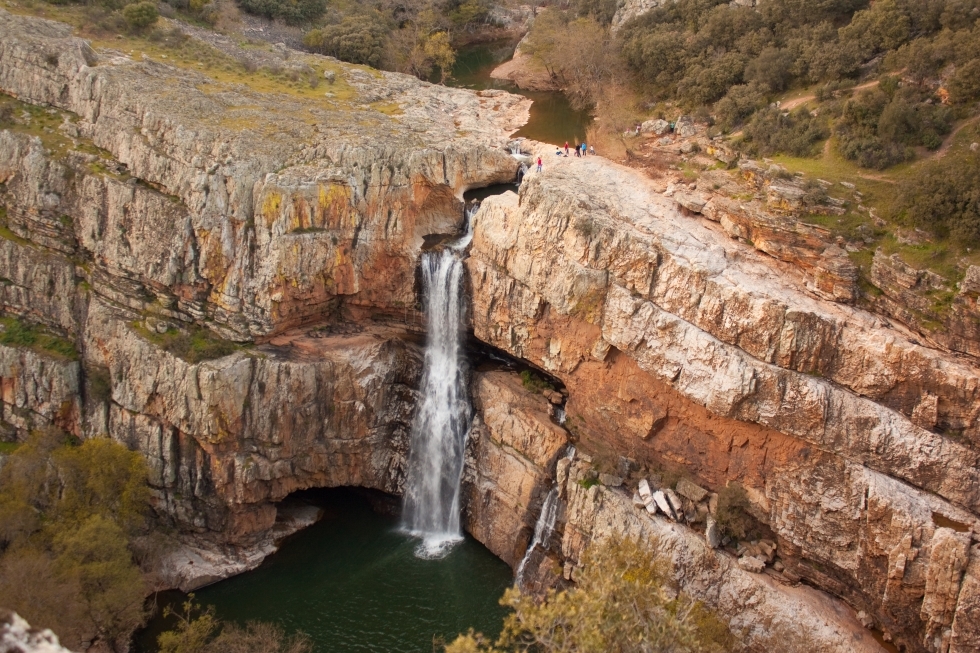
An impressive waterfall nearly 40 metres high is one of the best kept secrets in the province of Jaén. The town council of Aldeaquemada, the nearest village, recommends leaving your car at the foot of La Cimbarra and taking the path to the right in order to see the waterfall from its base, or taking the path on the left to see the waterfall head on.
6. Sierra de Grazalema. Grazalema, Cadiz
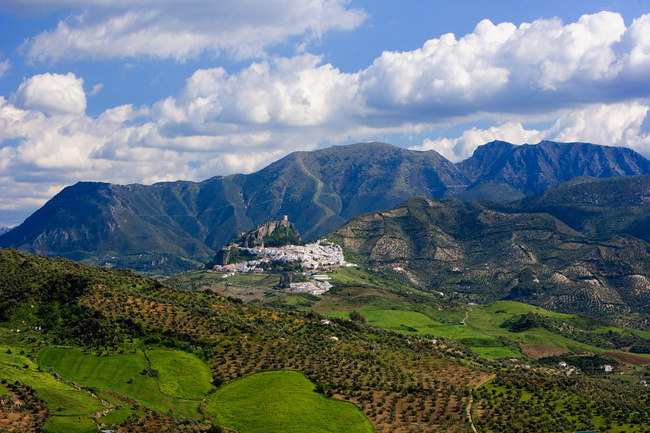
It's April year round in the Grazalema mountains. According to records it rains here more than anywhere else on the Iberian peninsula, something that makes this area one of the most ecologically valuable in Andalusia. The intense rainfall and the limestone terrain make this area a paradise for fans of rock climbing and caving as the landscapes are steep and there are many caves and grottos.
7. Cortegana, Huelva
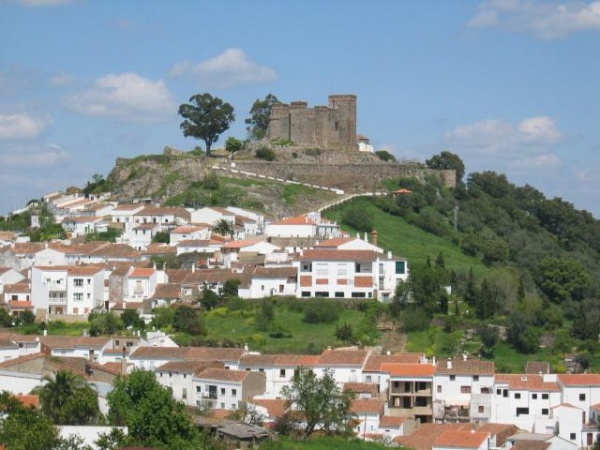
At only 60 kilometres from the Portuguese border you'll encounter a small medieval village with a gem to be discovered, the Sanchocuanto castle, where every August the most important Medieval fair in Andalusia takes place. In addition to the village's historic and architectural value, Cortegana is worth a visit for its natural beauty. The town is located in the middle of the Aracena mountain range, surrounded by valleys full of cork oak and chestnut trees.
8. Pasarela sobre el río Castril, Castril, Granada
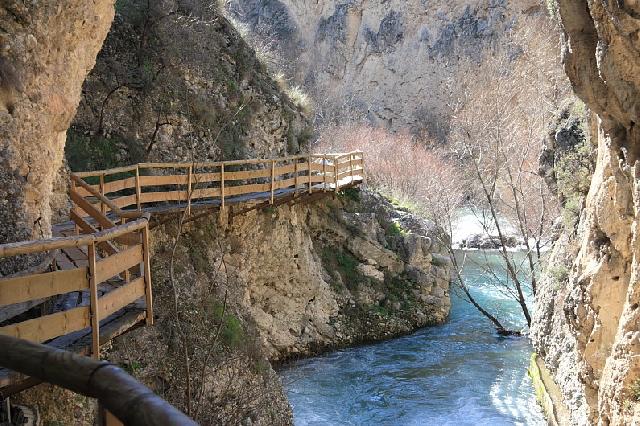
While the capital and the Sierra Nevada are the main tourist points in the province of Granada, there are other charming places in this area such as the Granada high plateau, a land of contrasts with nearly desert like terrain as well as high mountains. Here you'll find treasures such as the hanging footbridge over the Castril river, a spectacular 20 minute walk on the wooden footbridge through the river gorge. In addition to the village of Castril, it's also worth visiting Huéscar, the county's capital.
9. Vélez-Blanco. Castillo de Vélez-Blanco
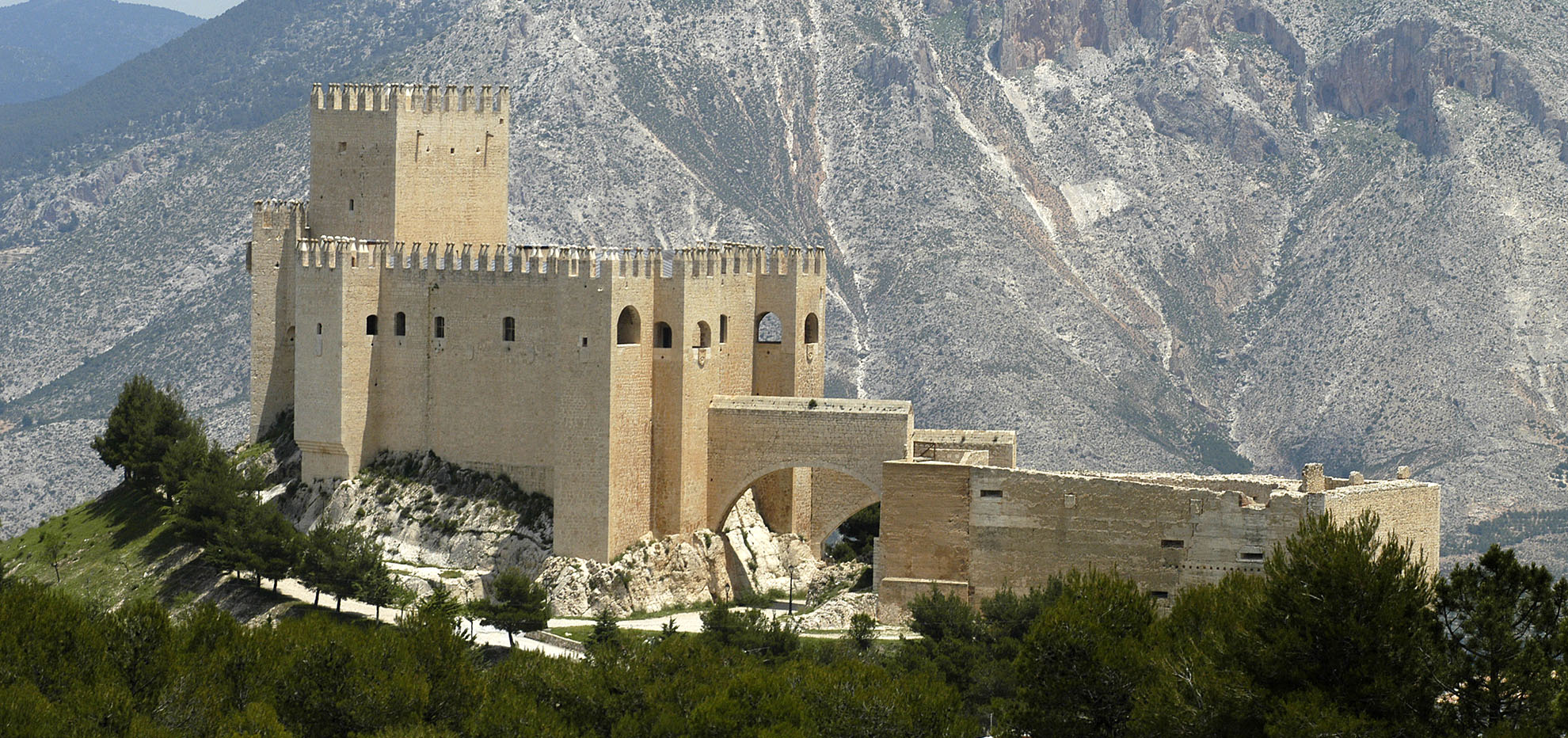
This Renaissance fortress, one of Andalusia's best, impresses from afar with a perfectly maintained silhouette on a hillside. It is nearly 2500 square metres and has two main buildings joined by a drawbridge. The fortress's "Patio de Honor" [Courtyard of Honor] cannot be missed. Made of white marble, it is considered a gem of the Renaissance.
10. Setenil de las bodegas, Cádiz

One of the most spectacular destinations in Andalusia is this village set in stone. Adapting perfectly to the topography of the area, part of the old town has been built around rocks, with some buildings above them and some inside them. Wandering the narrow streets you may suddenly find yourself in the heart of a rock.
 4
Like
Published at 10:00 PM Comments (2)
4
Like
Published at 10:00 PM Comments (2)
5 beaches you must visit in Alicante
Monday, May 15, 2023
Who doesn't want to enjoy a bit of paradise? Summer is approaching and those who are thinking of travelling to Alicante to enjoy its beaches will find in this selection places where you can immortalise a breathtaking sunrise and enjoy a relaxing afternoon in sheer bliss...
With more than 200 kilometres of coastline, the province of Alicante has a wide selection of incredible beaches, coves and cliffs that will take your breath away, but here are five that are certain to do so...
Bol Nou Beach in Villajoyosa
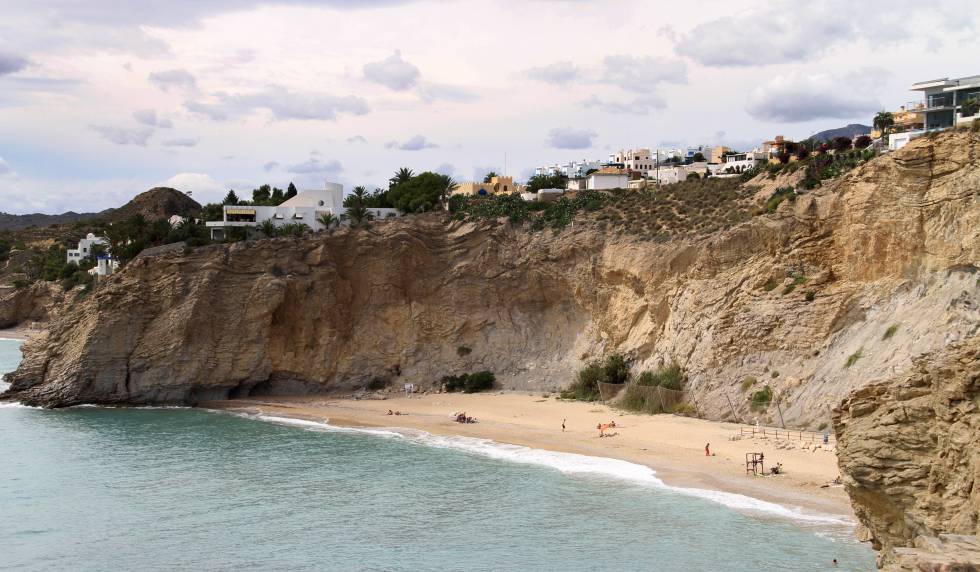
Also considered a cove, it is one of the most representative of this Alicante town. Its small stones and golden sand form a half-moon stretching more than 150 meters with crystalline turquoise waters that will remind anyone of the Caribbean. Awarded with the Blue Flag, it is undoubtedly a compulsory stop-off when looking for a bit of Mediterranean relaxation.
Albir Beach (L 'Alfàs Del Pi)

Just about three kilometres from the town centre, Albir beach is perfect to enjoy a magnificent day out at the beach where its nearby promenade allows you to enjoy numerous restaurants and beach bars. One of the main characteristics of this beach is its transparent water and pebbles, which allows you to get wet without getting covered in sand, for those who are not so keen on the sand getting everywhere, this is your beach. It's also great for the kids...they love playing with the pebbles.
Muchavista Beach in Campello

Its varied and attractive coastline offers a great opportunity to satisfy the senses. This extensive beach of fine sand is 3,300 meters long and 80 meters wide. It is located next to San Juan beach and is perfect for practising water sports such as windsurfing.
La Fossa Beach (Calpe)

It is bordered to the north by the Calalga beach and has been awarded the “Q” mark for Tourist Quality. It is considered one of the best beaches in Alicante, where time literally stands still. Its kilometre of fine golden sand is mixed with the fabulous landscape of the Peñón de Ifach, mesmerising.
La Grandella Beach (Jávea)

It is undoubtedly one of the most famous and not to be missed. Winner for two consecutive years of The Best Beach in Spain Award, this 220-metre cove is surrounded by irregular cliffs and crystalline waters where you can practice scuba diving and enjoy its marine fauna.
 2
Like
Published at 12:59 PM Comments (0)
2
Like
Published at 12:59 PM Comments (0)
Spain's Most Exciting Walks
Friday, April 21, 2023
Spain has some of the most spectacular trails in Europe and even some that were once considered amongst the most dangerous in the world. If you fancy a walk with a little more excitement you might just want to check out these breathtaking but vertiginous walks around Spain...here are the top 10 (in no particular order.)
1. Bejía Canal, Anaga, Tenerife
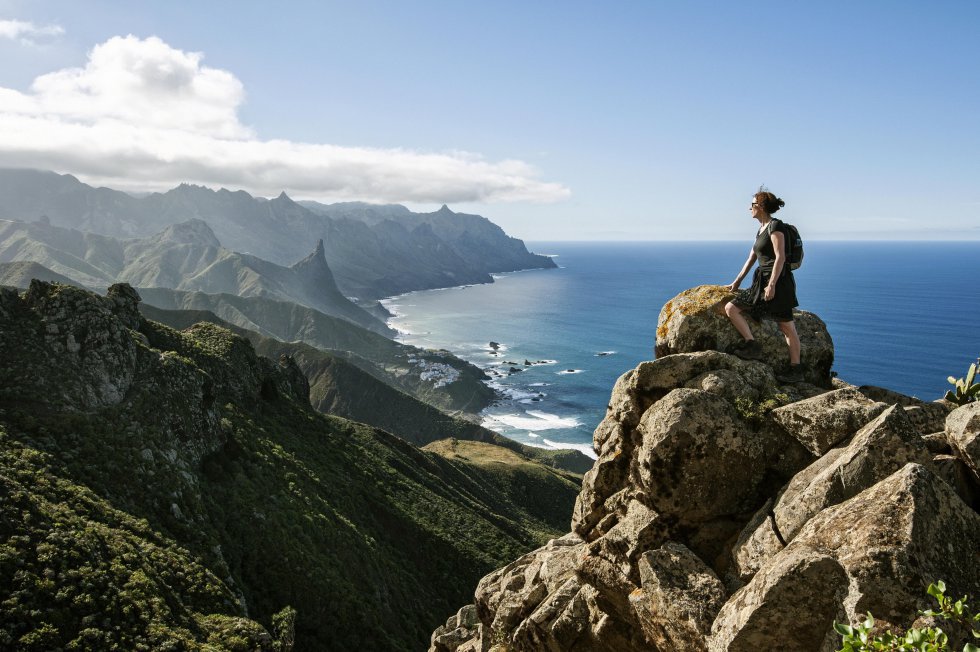
Located on Tenerife’s northeast coast, the path out of the village of Bejía, on the northern slope of the Anaga massif (above), offers plenty of photo opportunities. Moderately difficult, the trail is four kilometres long and follows the Bejía canal through the Seco ravine that eventually drops down to Punta del Hidalgo. The walk can be circular – and longer (7.5 km) – if you climb the ravine from Punta del Hidalgo and come up from the bottom of the valley to Bejía.
2. Faja de las Flores, Pyrenees, Huesca

In one of the most spectacular belts of Ordesa, there is a challenging trail across the valley that requires some rock climbing. It takes about eight hours but the effort is rewarded by breathtaking views.
3. Cañón de Añisclo, Pyrenees
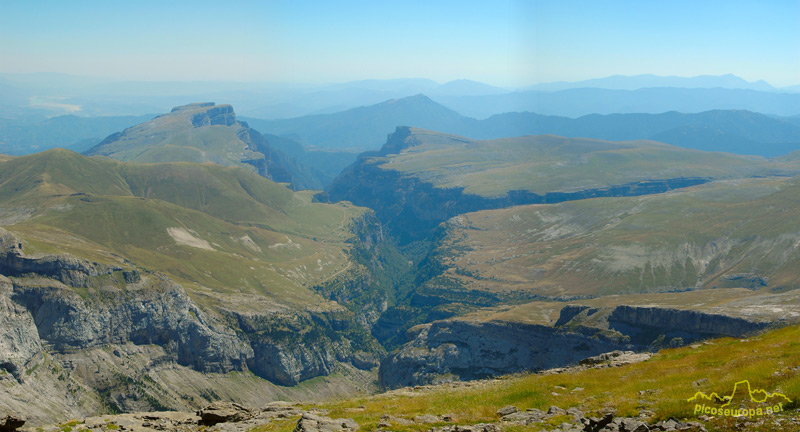
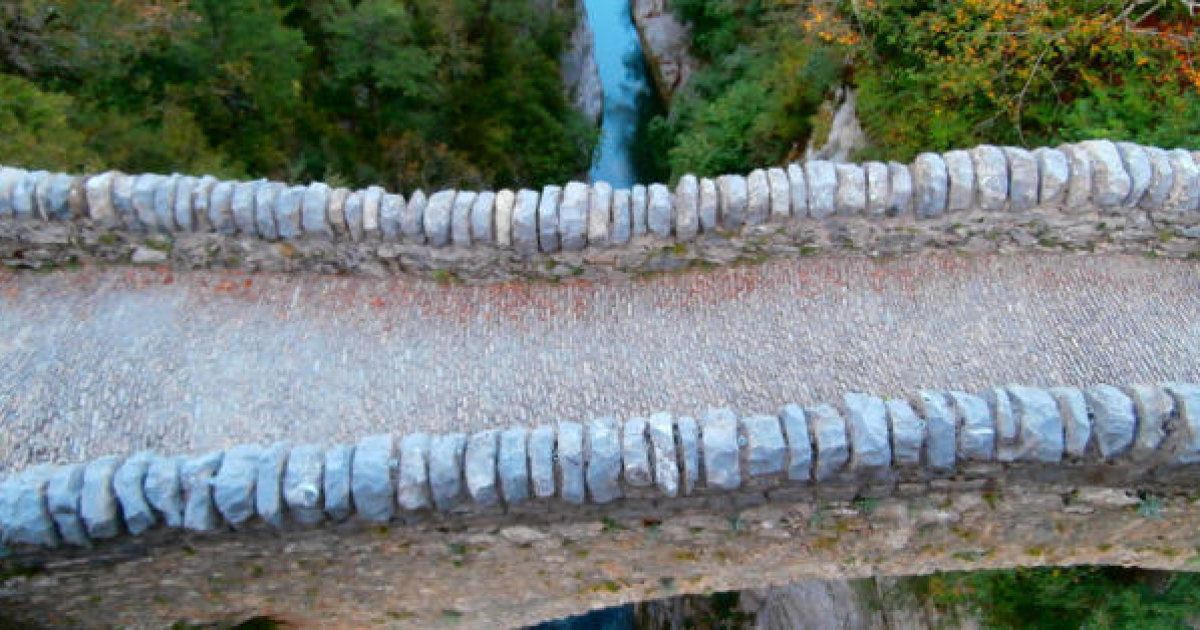
The Canyon of Añisclo, generated by the Bellós river, is oriented from north to south and extends for almost 25 kilometres, from the Circus of Añisclo - at the foot of Monte Perdido - to the confluence with the Aso valley. Its minimum altitude is 700 m, in the Fountain of the Baths; And the maximum of 3,022 m, in Punta de las Olas.
4. Cares Route, Picos de Europa, Asturias y León

Accessible and amazing, this magical 12-kilometre walk is carved into the edge of the mountainside in the Picos de Europa. Known as the Cares trail, it connects the Asturian town of Poncebos with Caín in León, offering the kind of views that have made it one of the most popular hikes in the national park. The trick is to have a friend walk from the other end so you can swap car keys midway through the hike and avoid having to trudge the 12 kilometres back to your vehicle!
5. Penya Roja, Mallorca
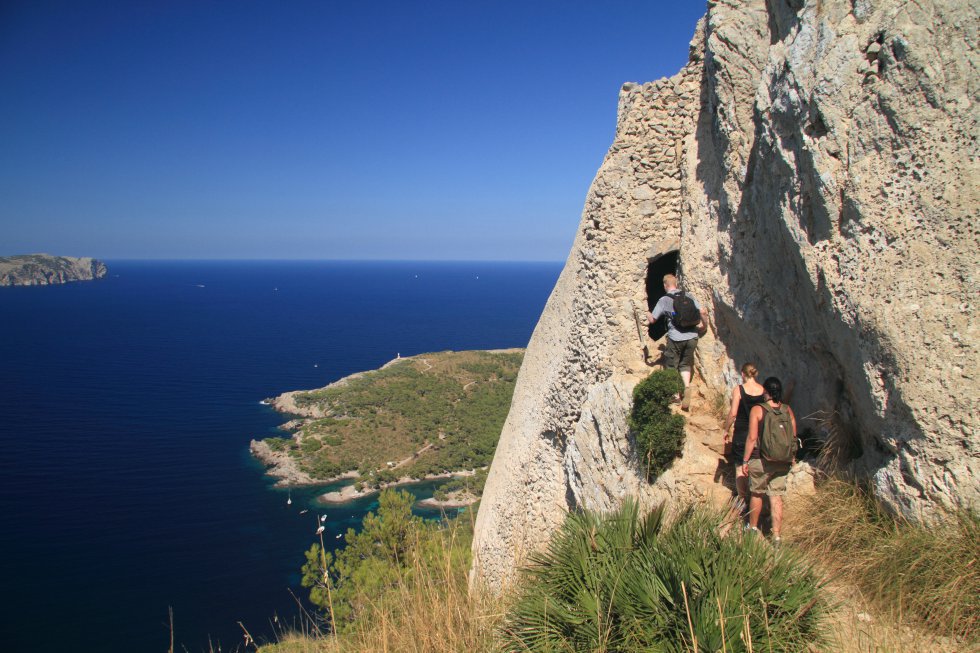
There are plenty of exciting and secret climbs on the peninsula of Alcudia in Mallorca, like the trail to Penya Roja from the Victoria sanctuary that hugs the cliff face and is dizzying enough to require a handrail. The highlight of this walk is the Atalaya crossing (above), a narrow 15th-century tunnel designed to protect access to the fort at the top. The climb not only leads you to the ruins of this fort but also gives you a magnificent view of the Mallorcan coastline.
6. Caminito del Rey, Málaga
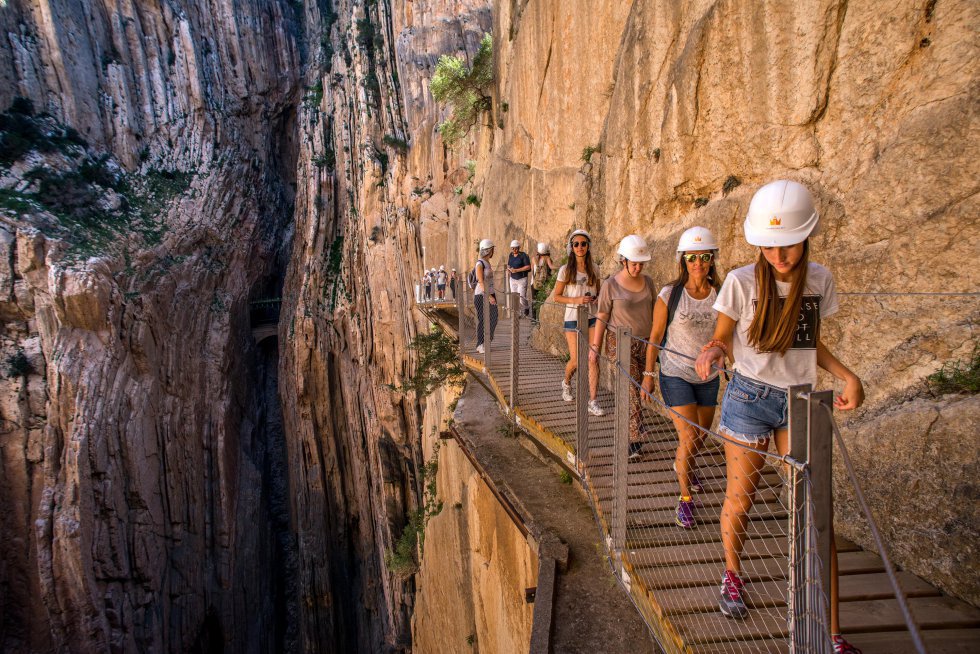
For a long time, the Caminito del Rey – King’s Path – was considered one of the most dangerous trails in the world, but the construction of a brand new footbridge over the old and deteriorated trail in 2015 now allows walkers to safely cross the vertiginous 100-meter-high Gaitanes stretch over the River Guadalhorce. A real treat.
7.Cahorros de Monachil, Granada

Just minutes from the center of Granada, the Monachil River runs through a narrow gorge at the base of the Sierra Nevada massif where an exciting mountain trail – three hours long and moderate to difficult – climbs above the ravine (above), taking you to a suspension bridge that’s 63 meters long and a passageway that forces you to crouch at the part known as The Pigeons’ Cave.
8. Congosto de Mont-rebei, Lleida, and Pasarela de Montfalcó, Huesca

The most hair-raising part of this walk that takes you along the Mont-rebei gorge – 500 meters high and barely 20 meters wide – has a steel handrail to stop you falling into the abyss. Running through the gorge is the River Noguera Ribagorzana on the border between Aragon and Catalonia in the Montsec mountain range. The round trip is 14 kilometres, with the footbridge of Montfalcó providing the dramatic ending. You can hire mountain guides if needed from the Montfalcó hostal. (www.guiasdelmontsec.es).
9. Grau de Barrots, Montsant, Tarragona

The ‘graus’ that crisscross the Montsant mountain range, such as l’Escletxa (above), are narrow trails with sudden ascents. The most vertiginous one is Barrots – 5.5 kilometres of moderate to difficult hiking – which follows terraces that cling to the rock faces overlooking the Priotat vineyards.
10. Mao River Footbridge, Ourense

The last stretch of the River Mao drops 600 meters in just a few kilometres, creating a stunning series of small waterfalls before it snakes through a narrow valley. A wooden walkway built into the hillside takes you to the point where this tributary meets the River Sil. The walk is an easy two kilometres that leave from La Fábrica, an old power station that has been converted into a lodge.
 3
Like
Published at 8:09 PM Comments (0)
3
Like
Published at 8:09 PM Comments (0)
Spam post or Abuse? Please let us know
|
|